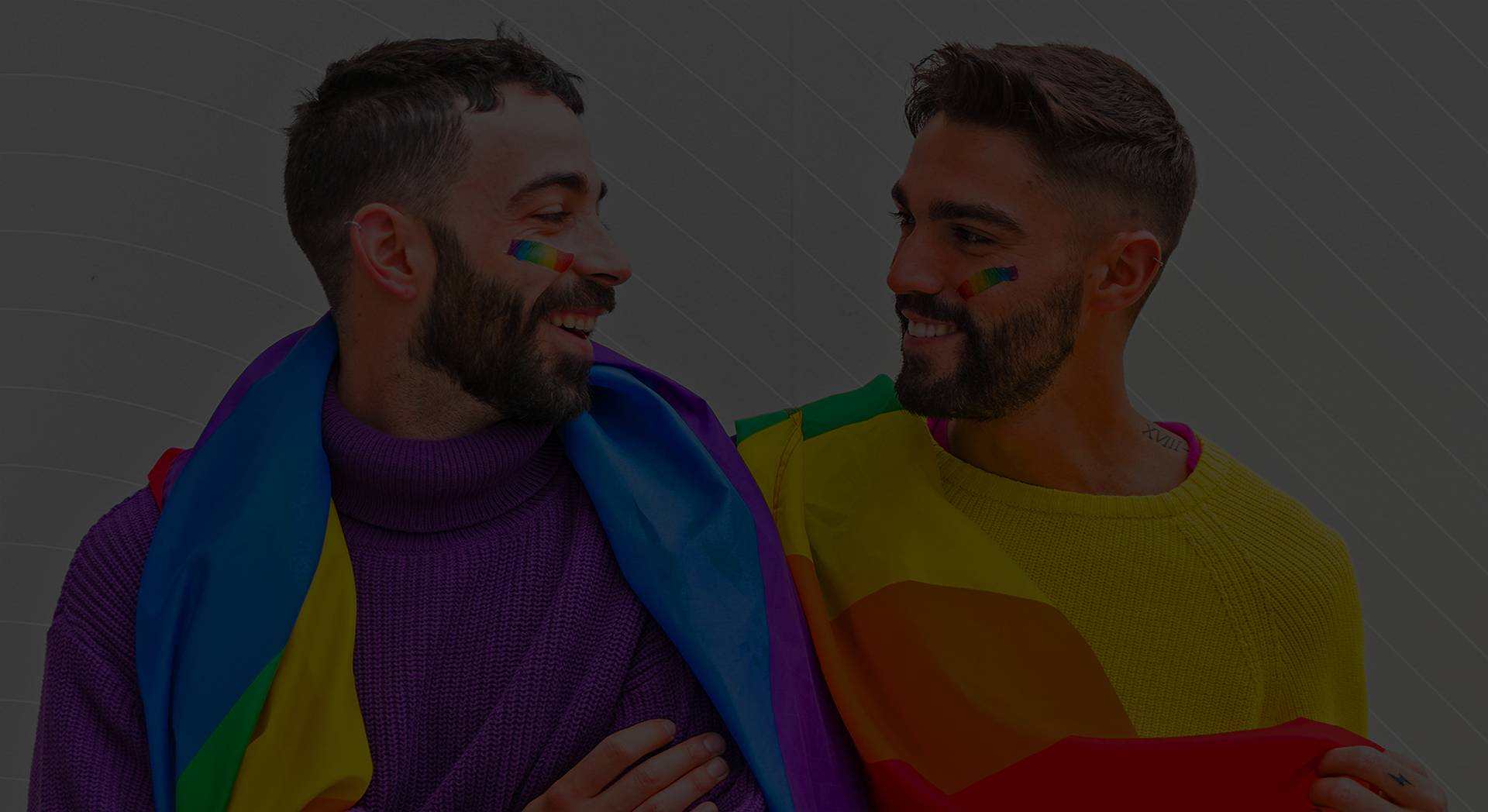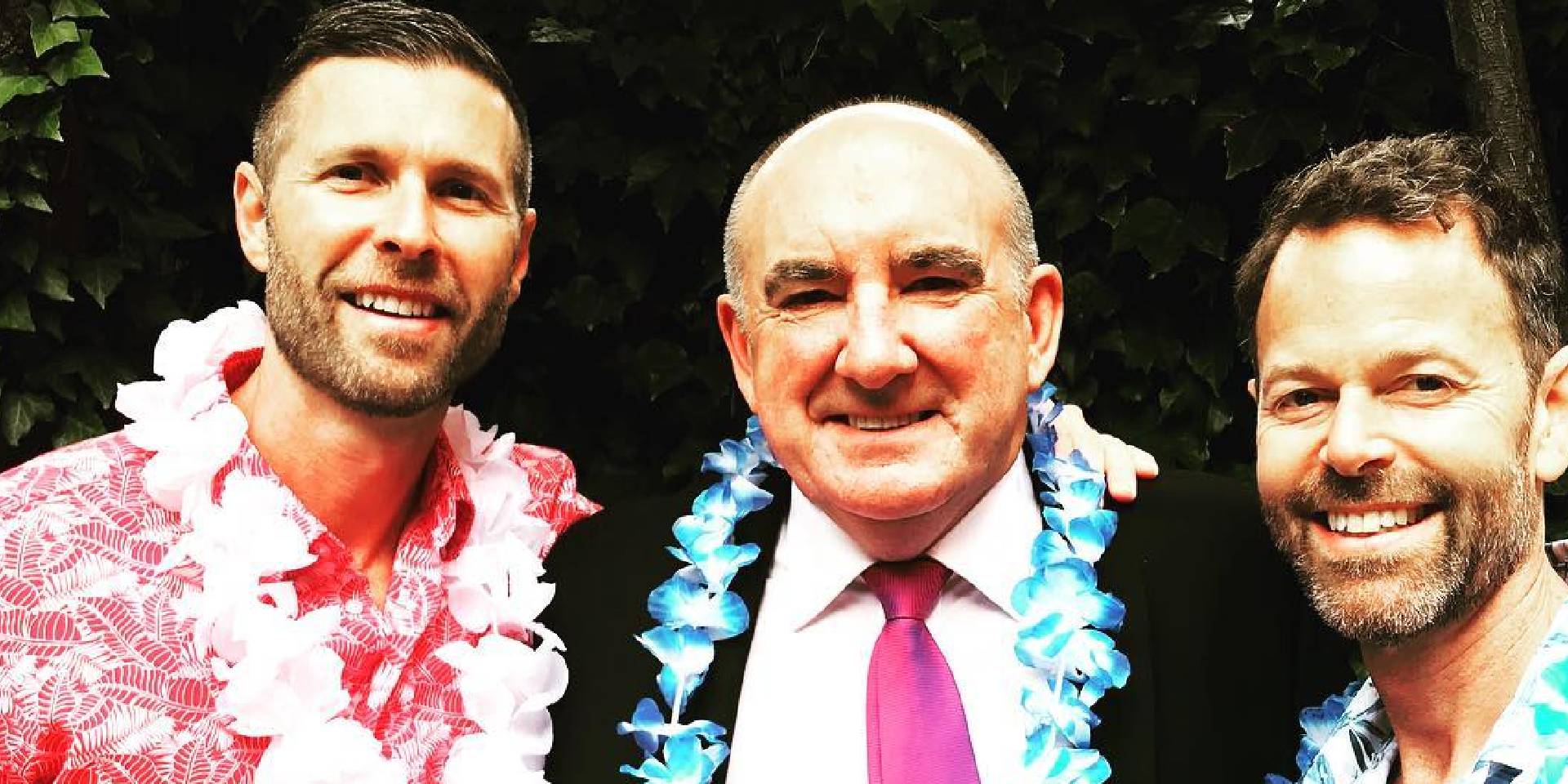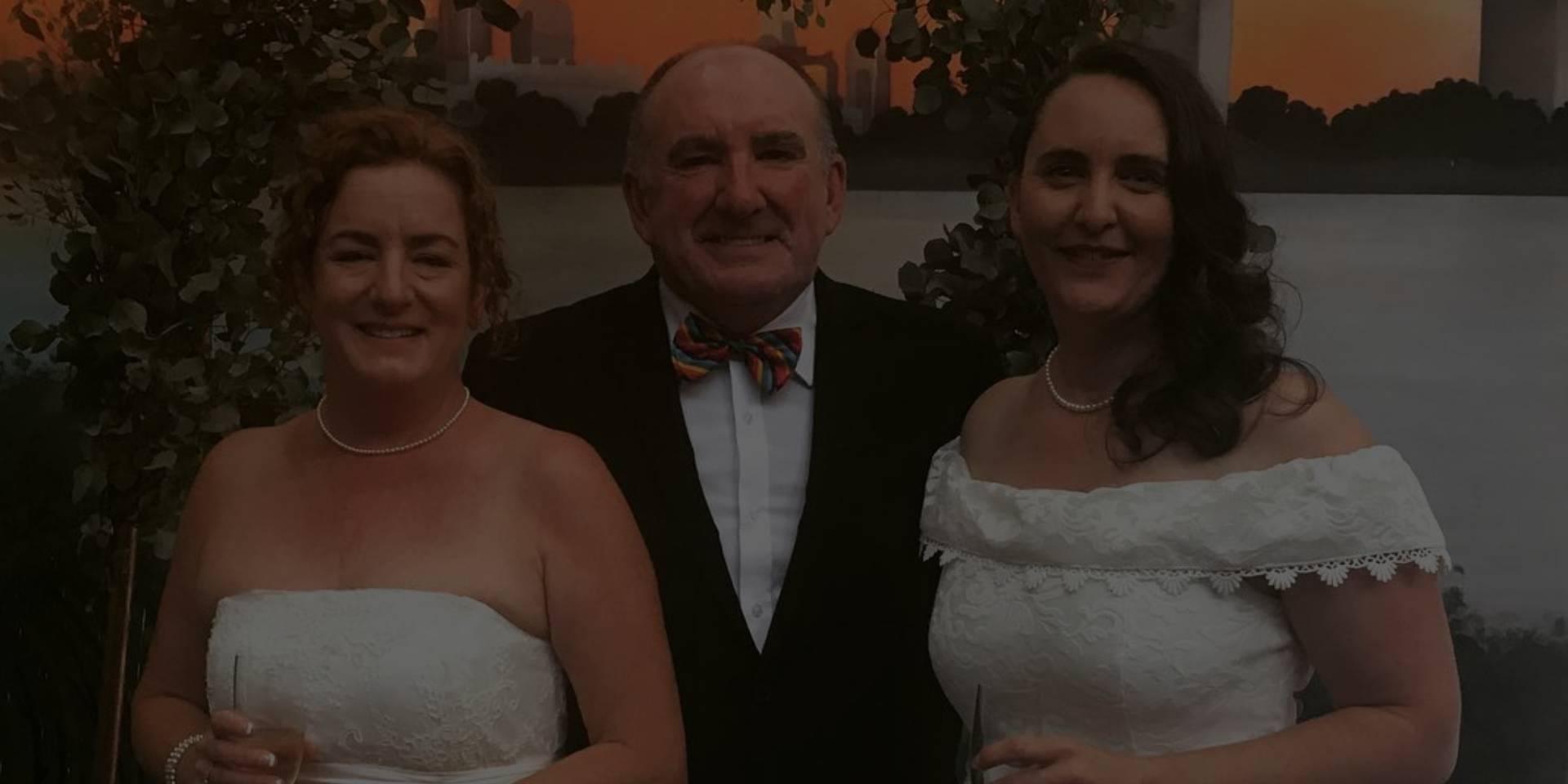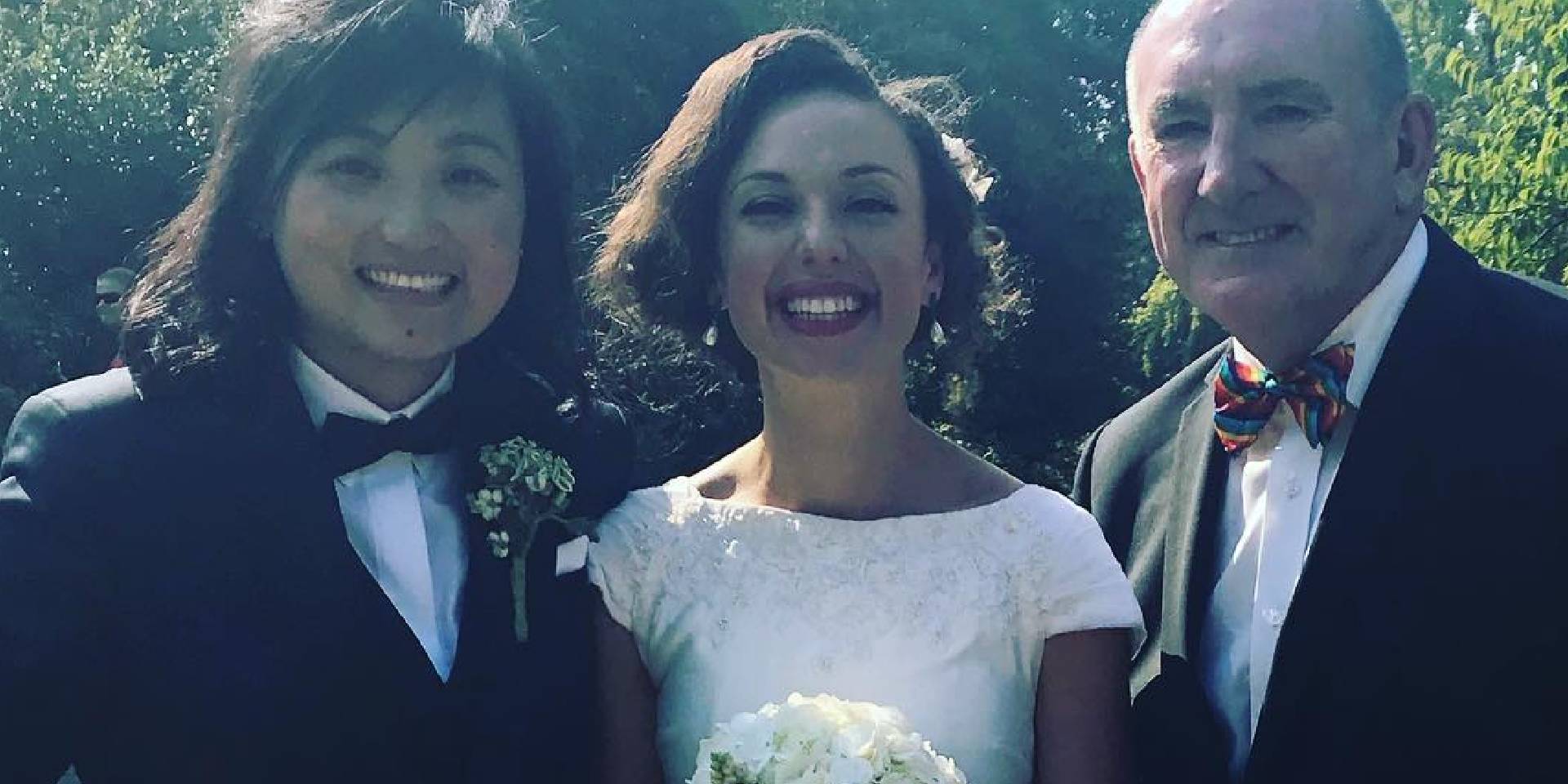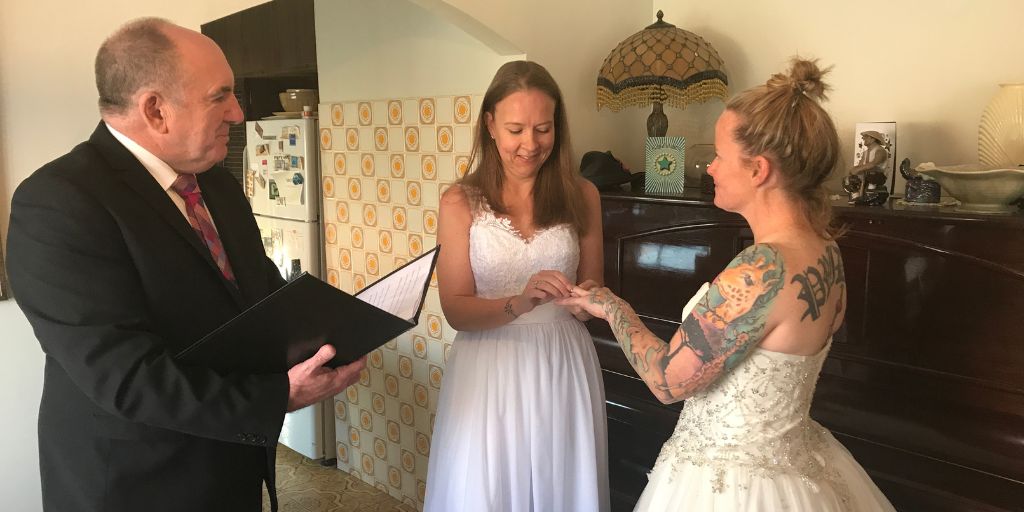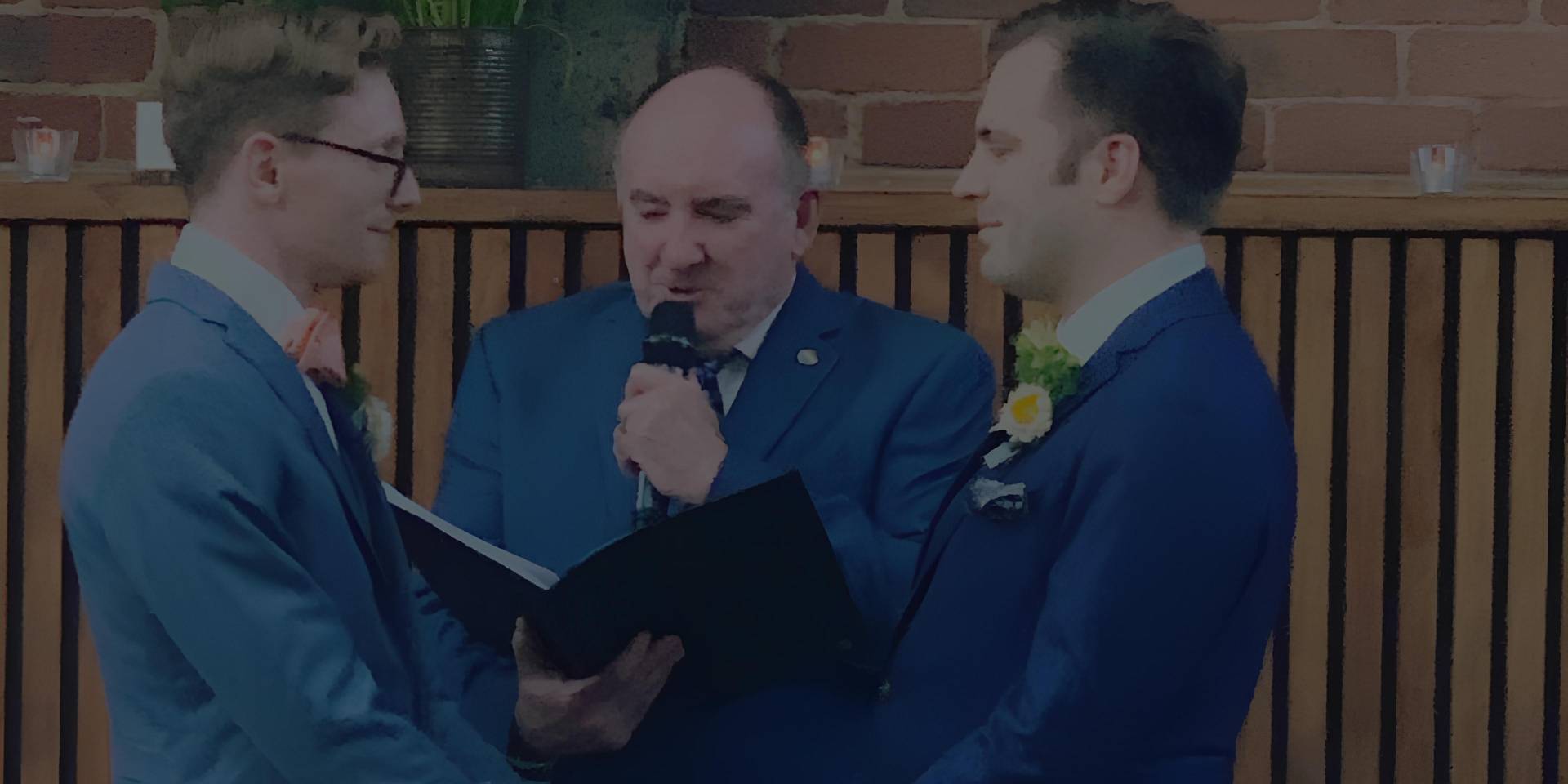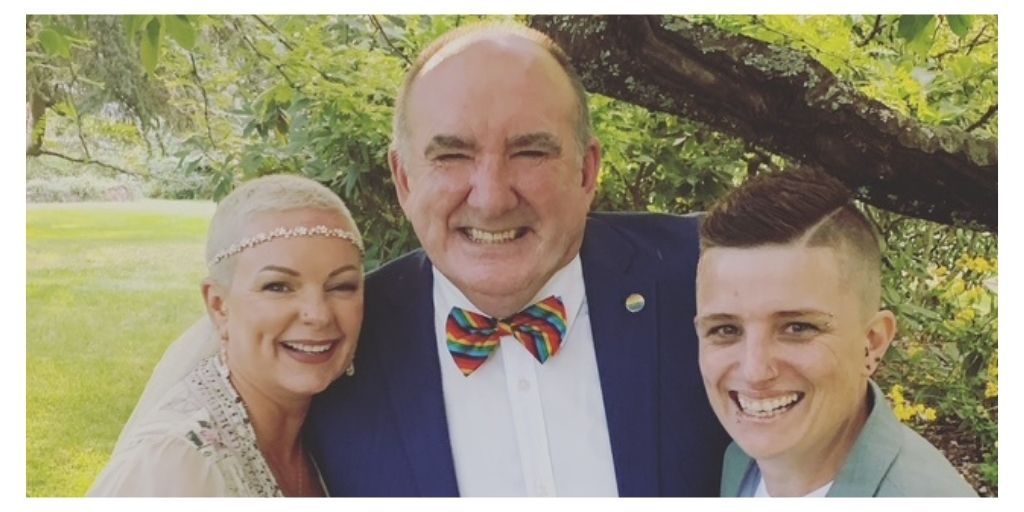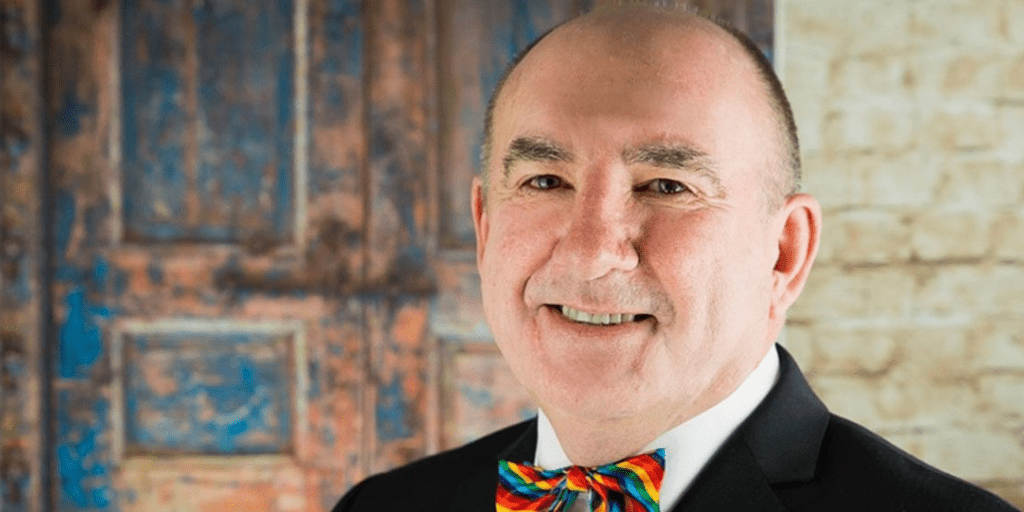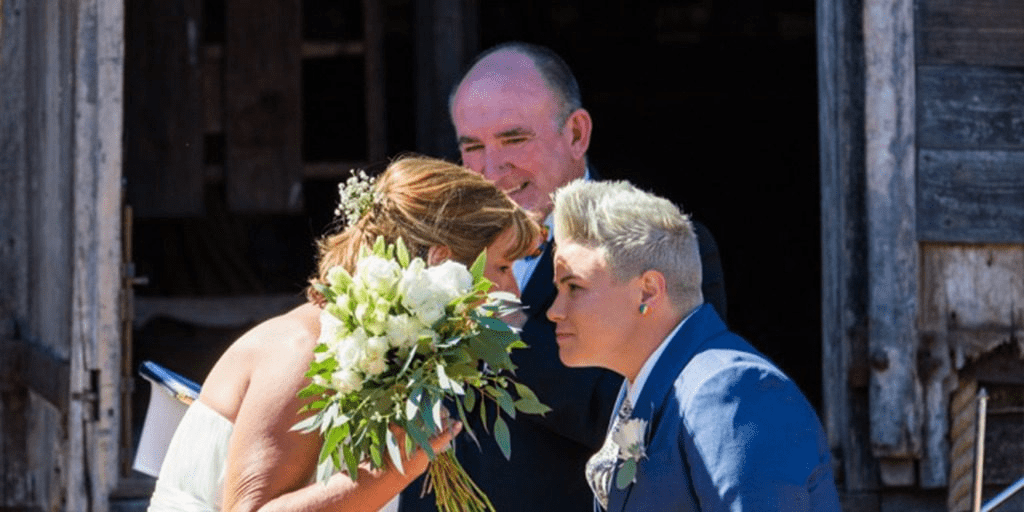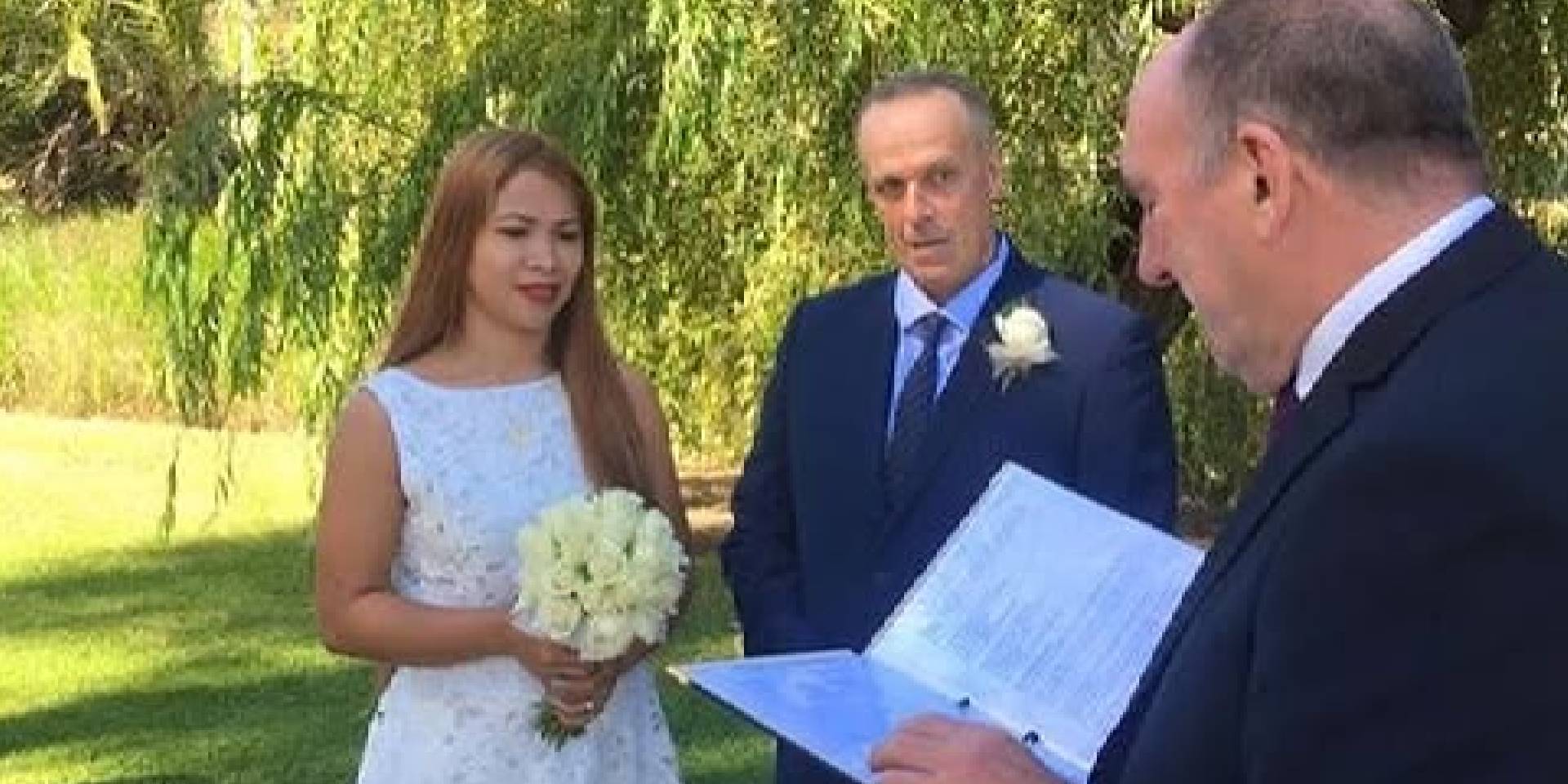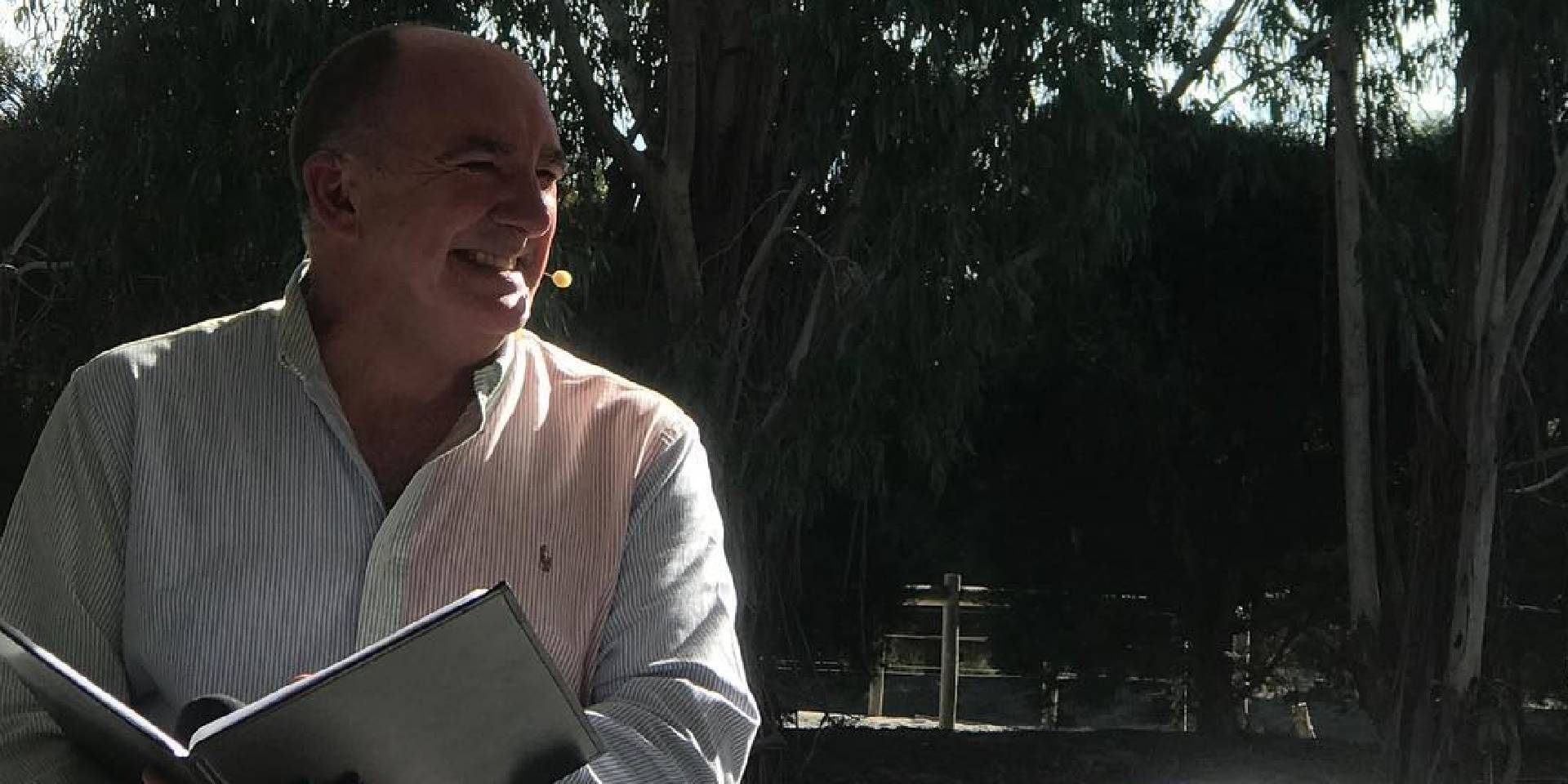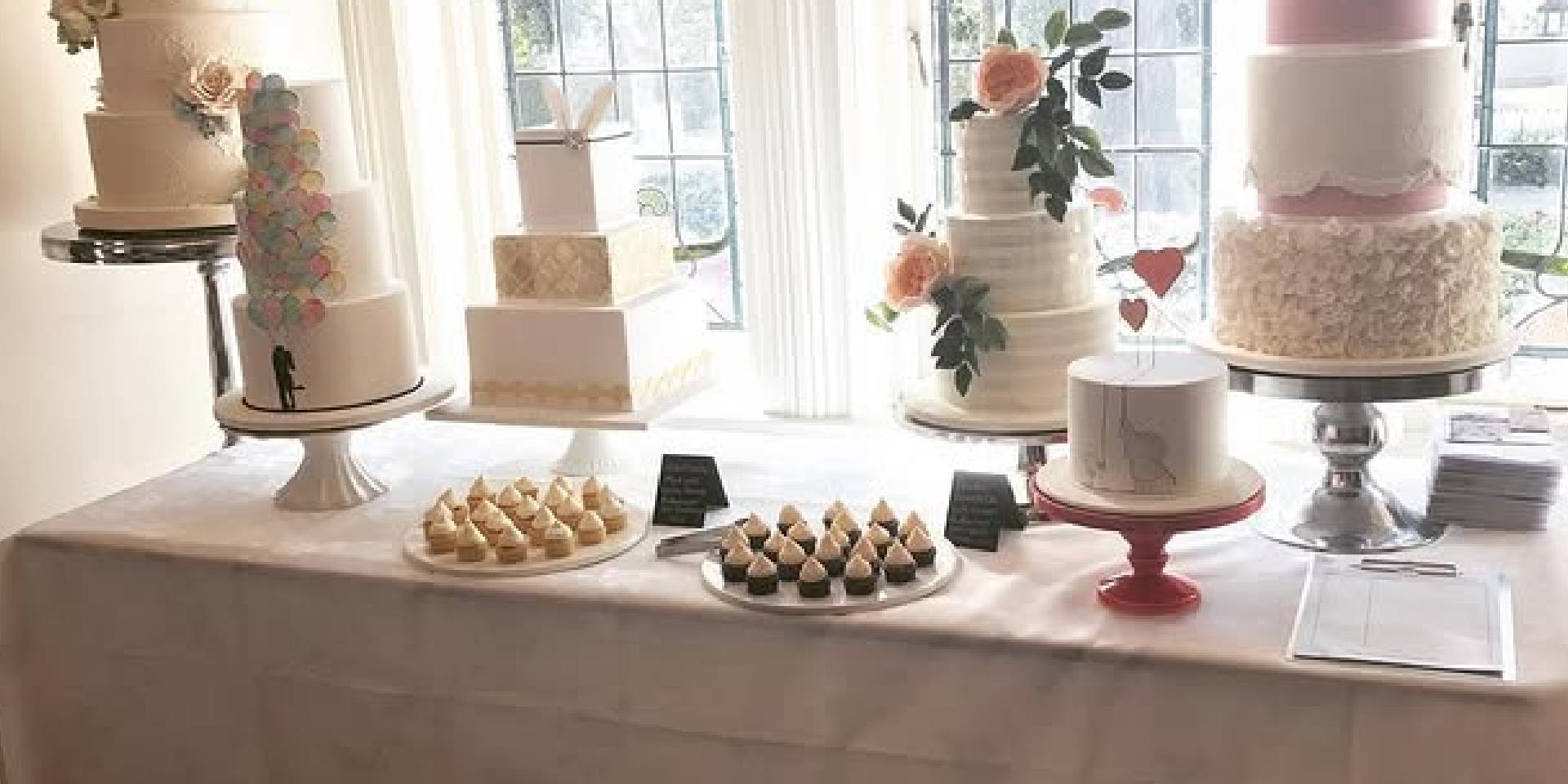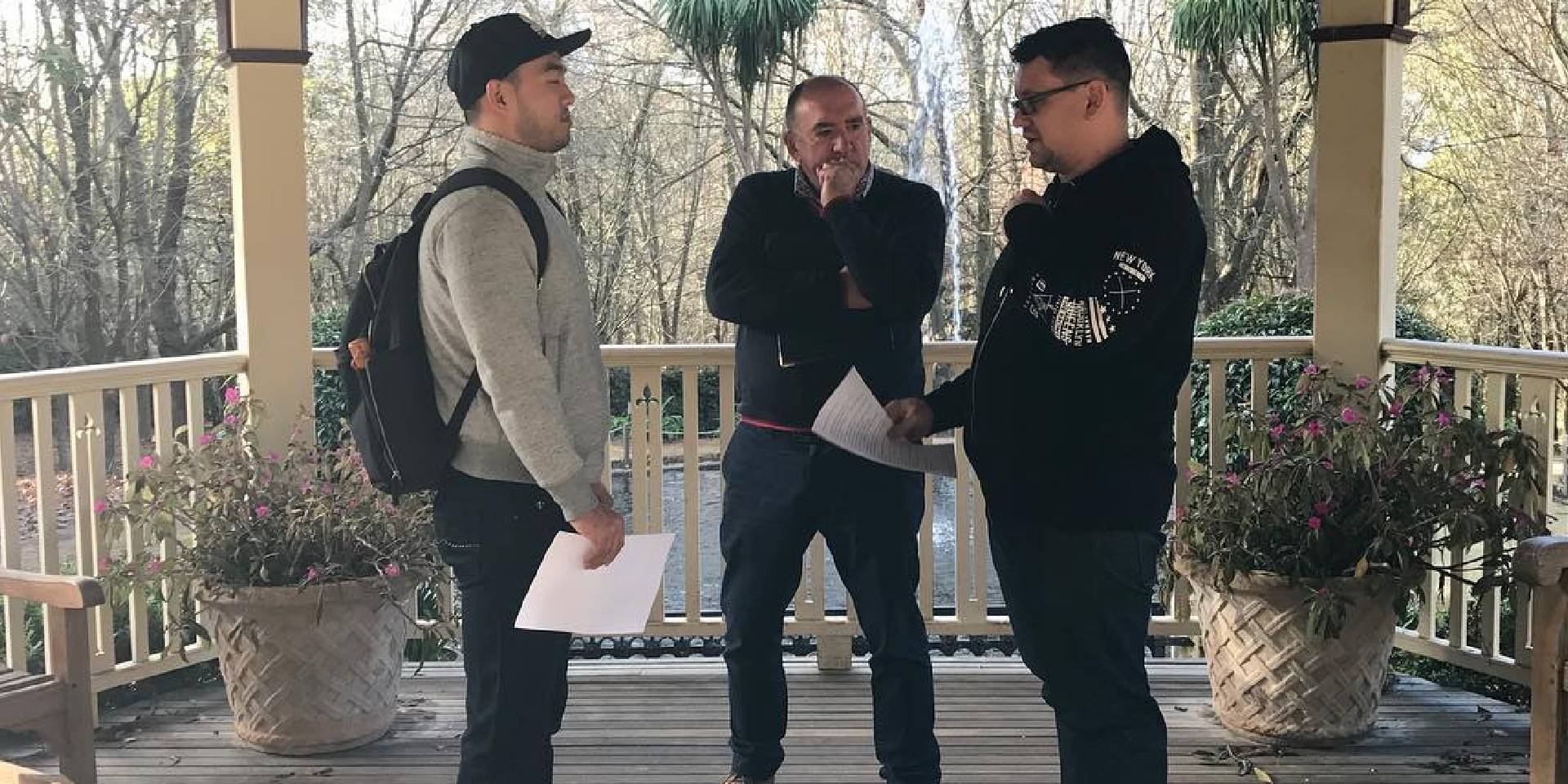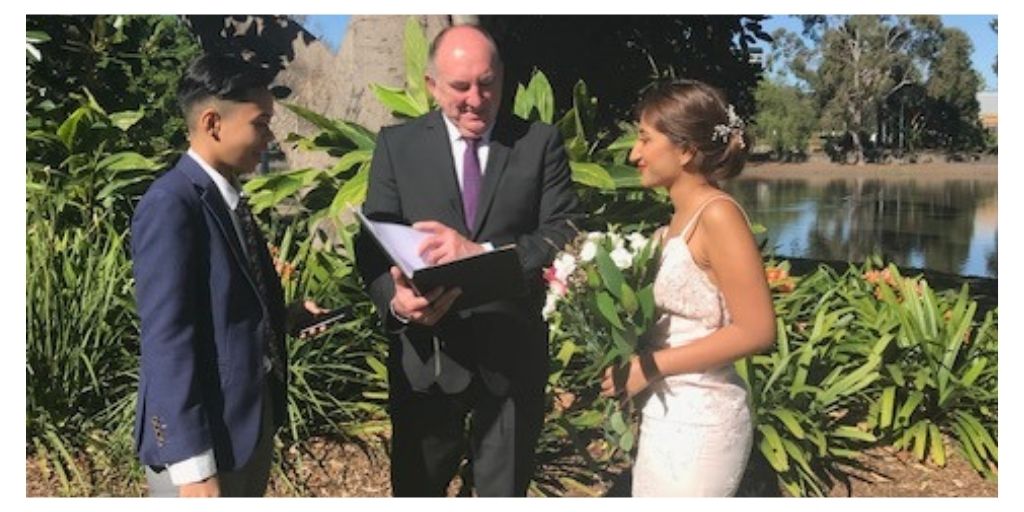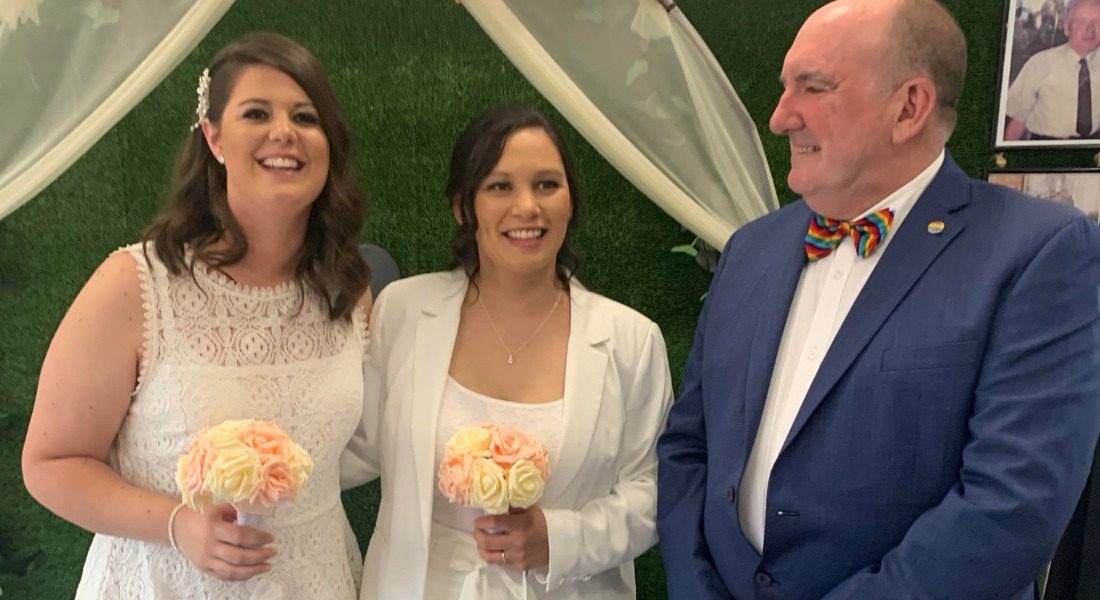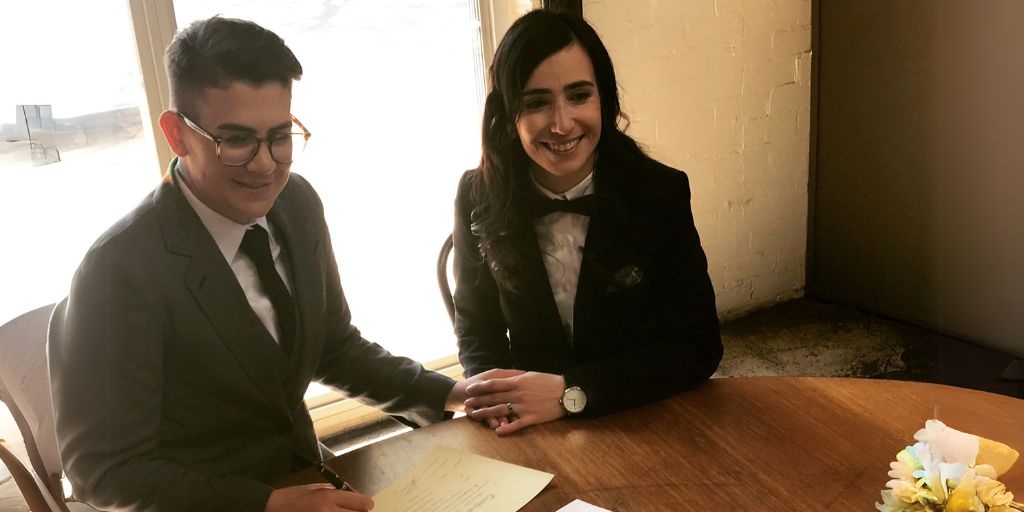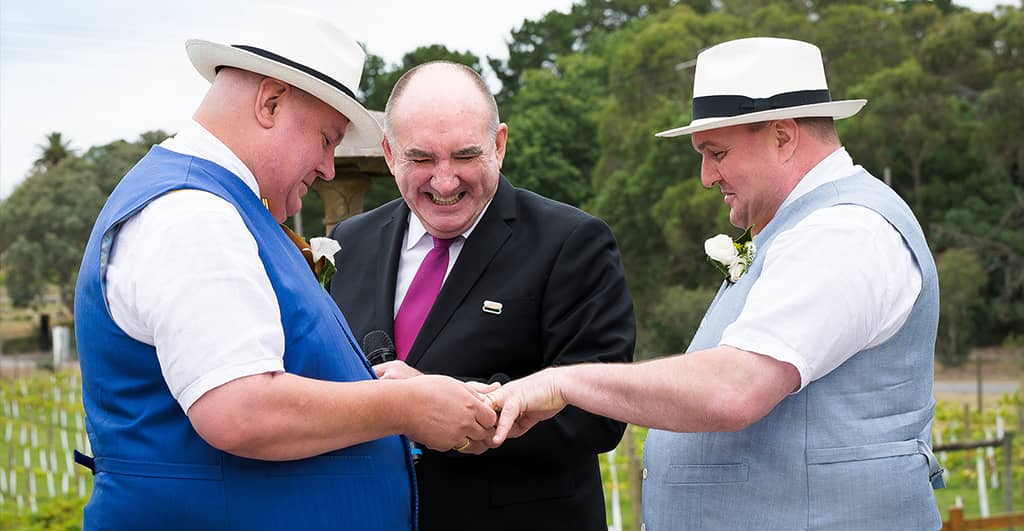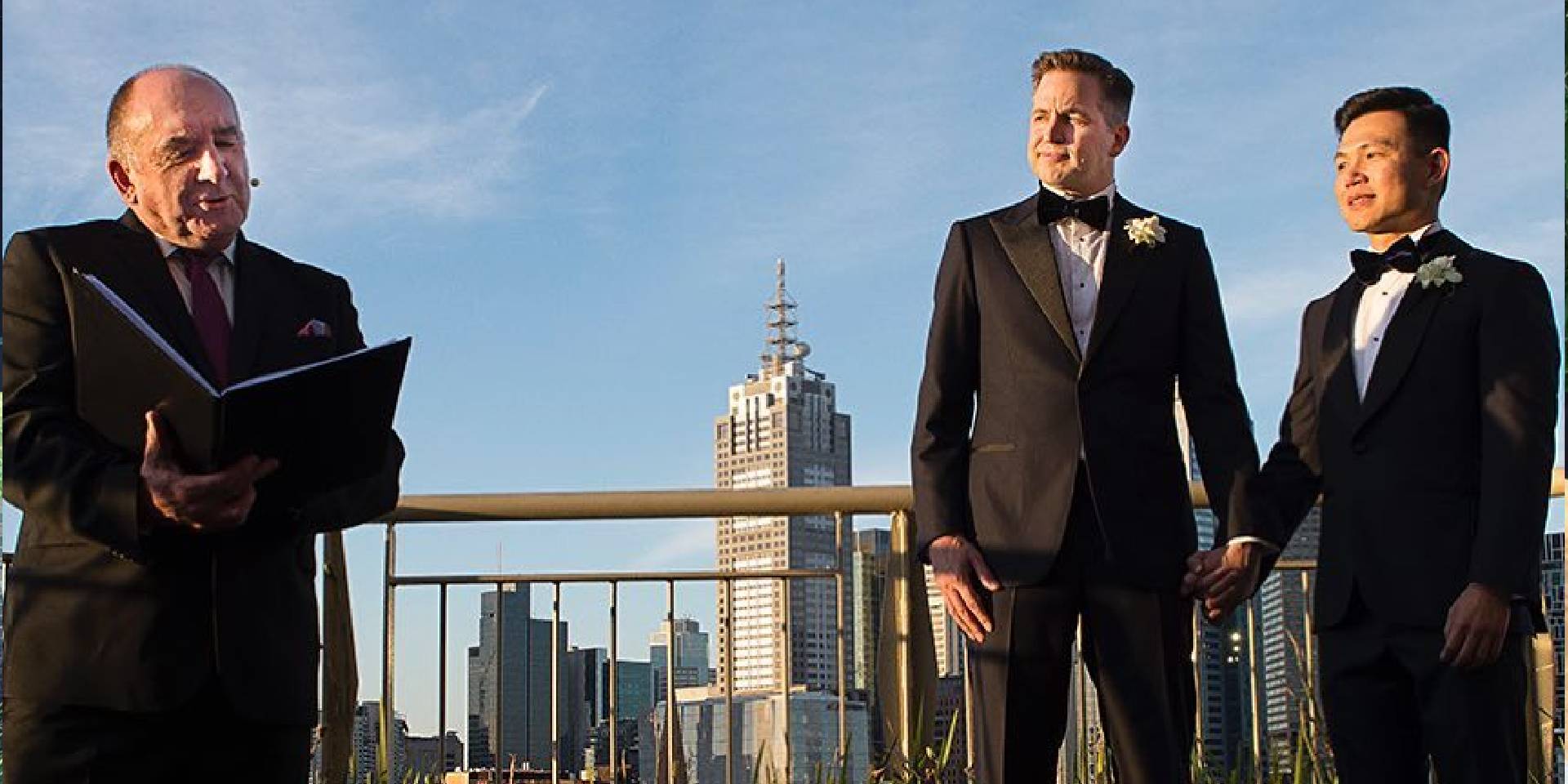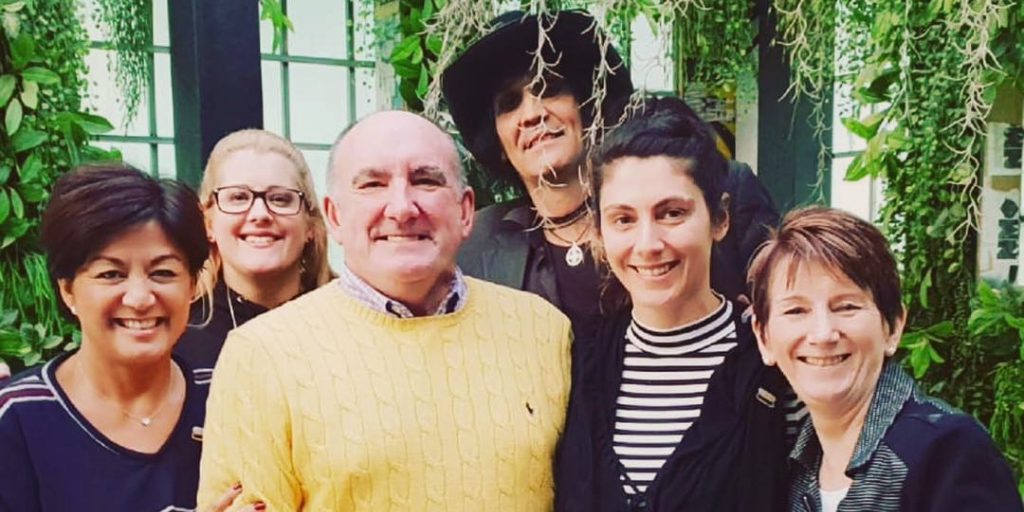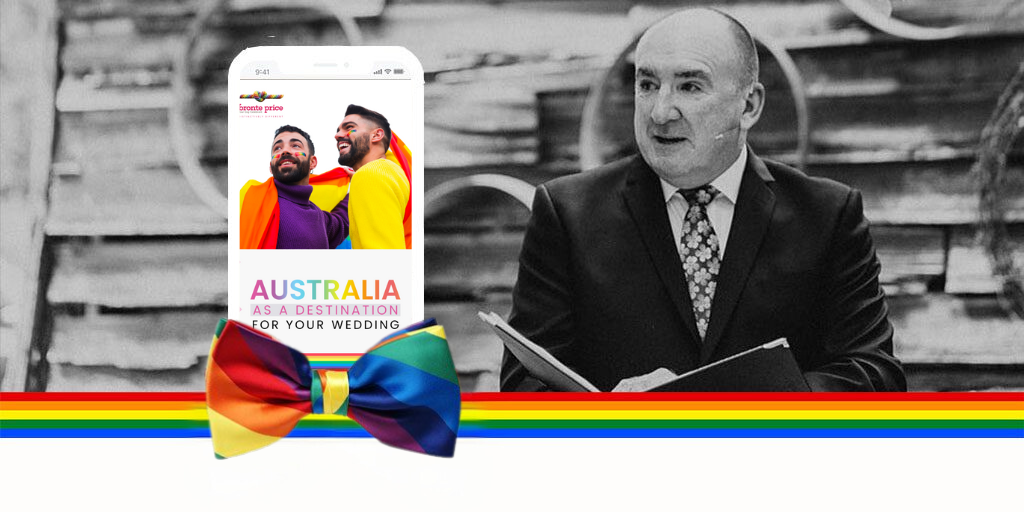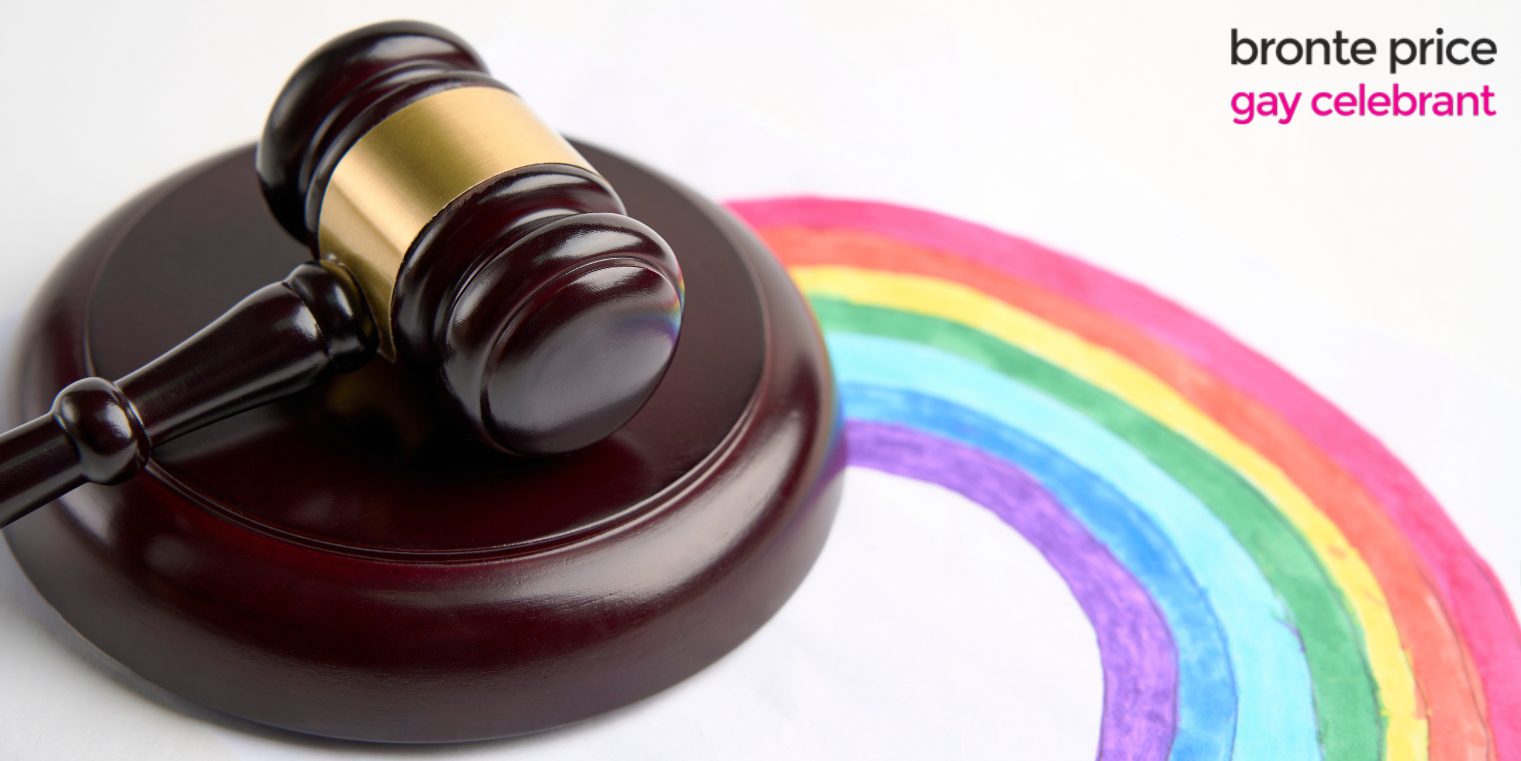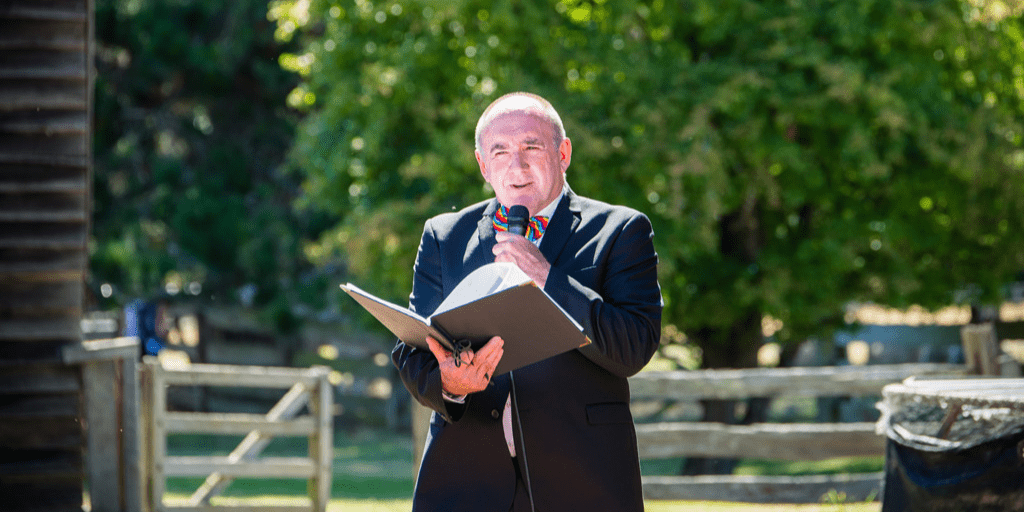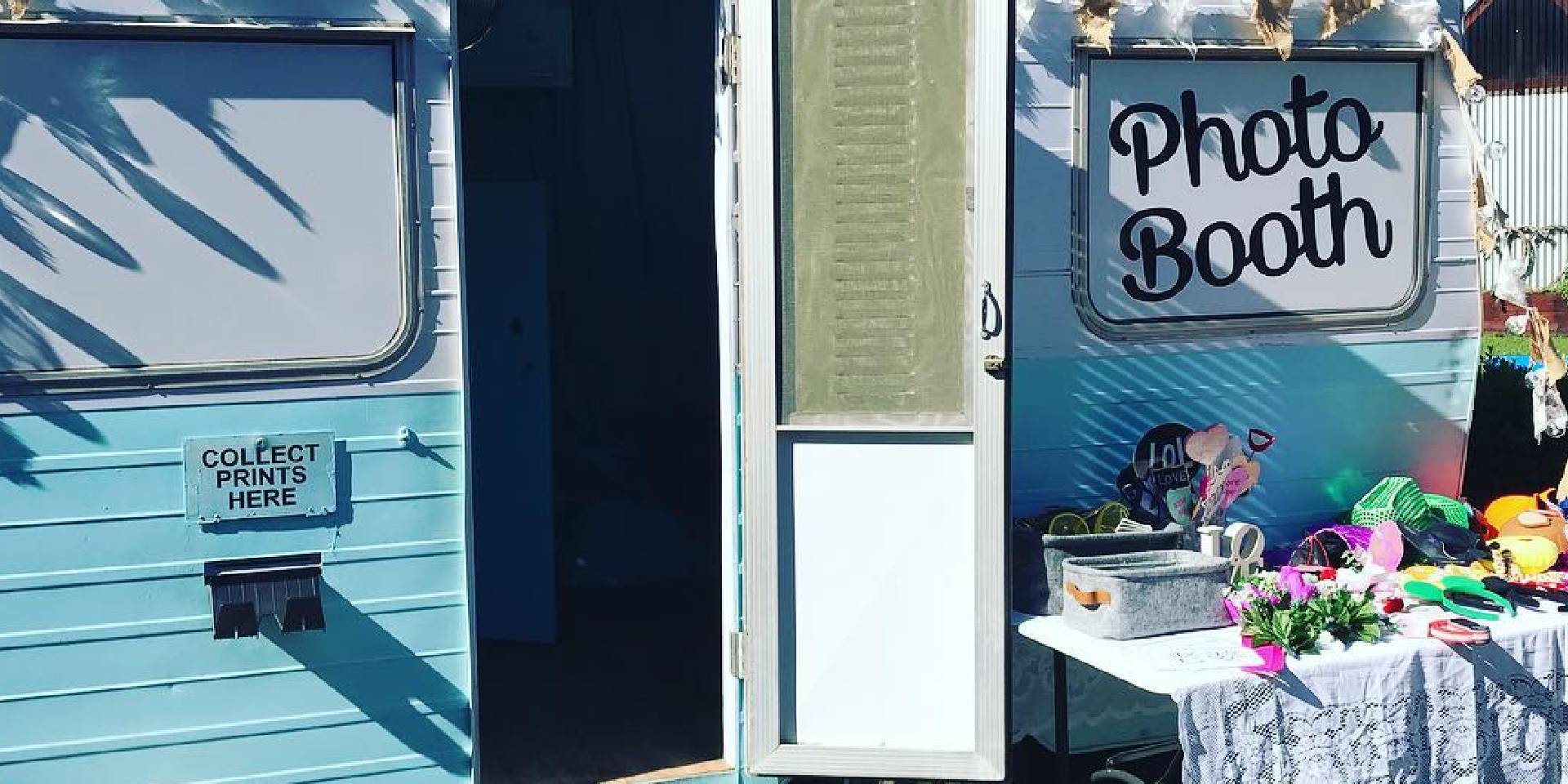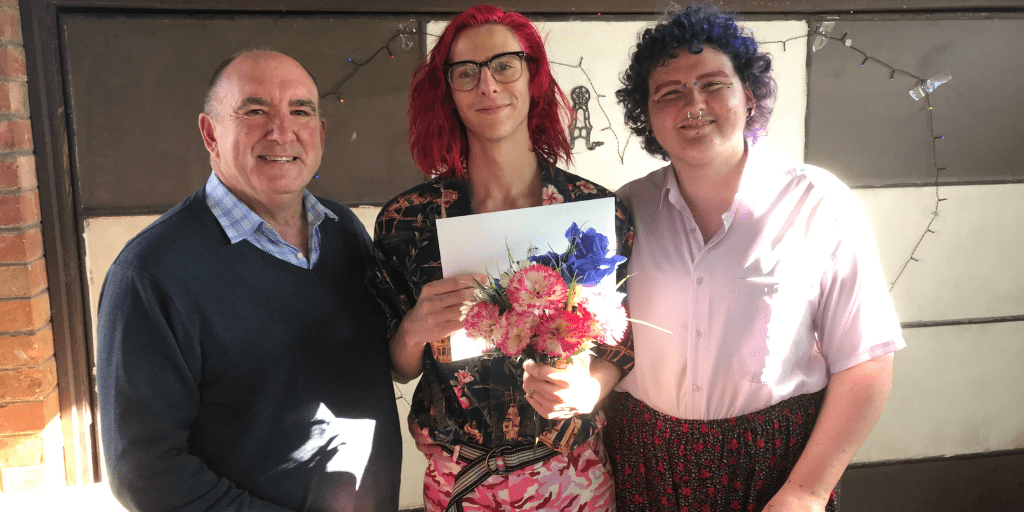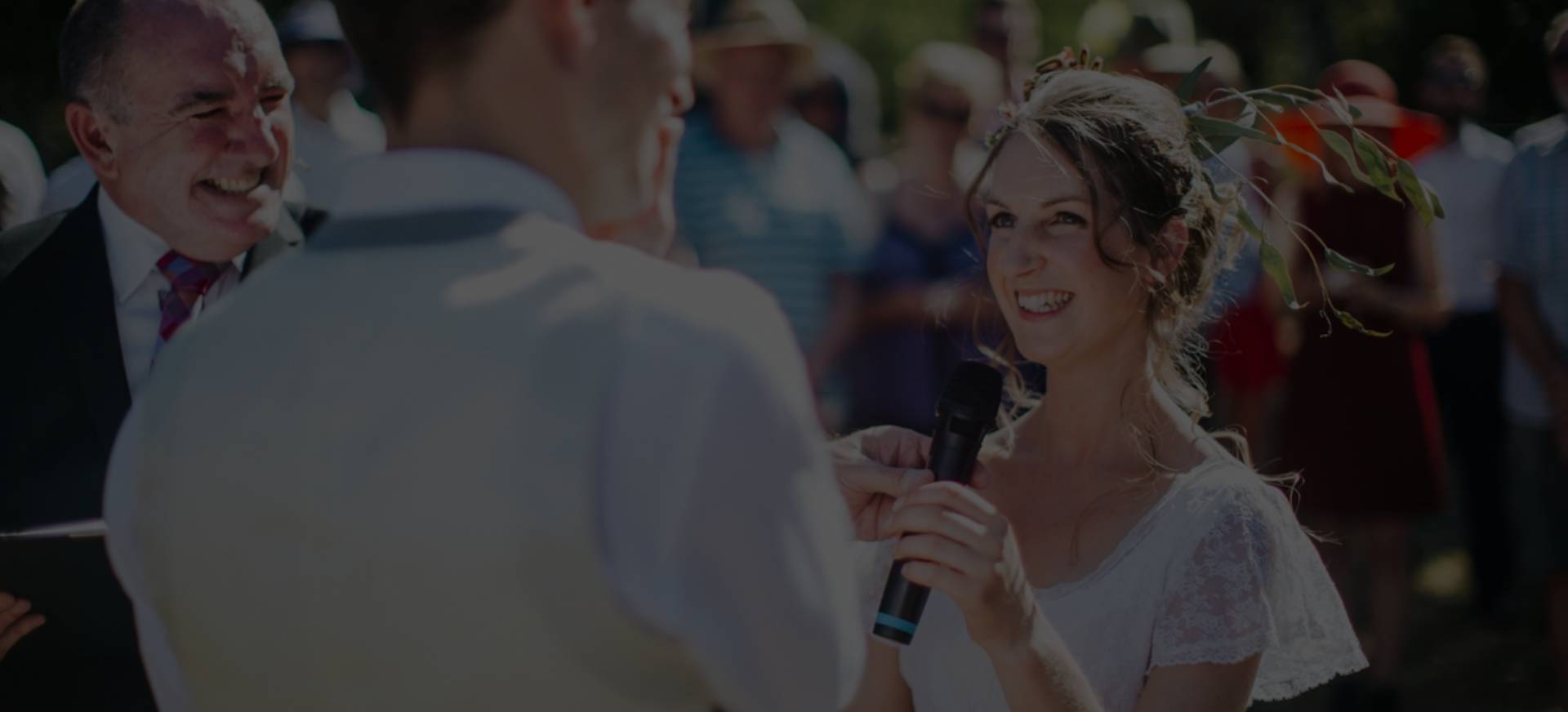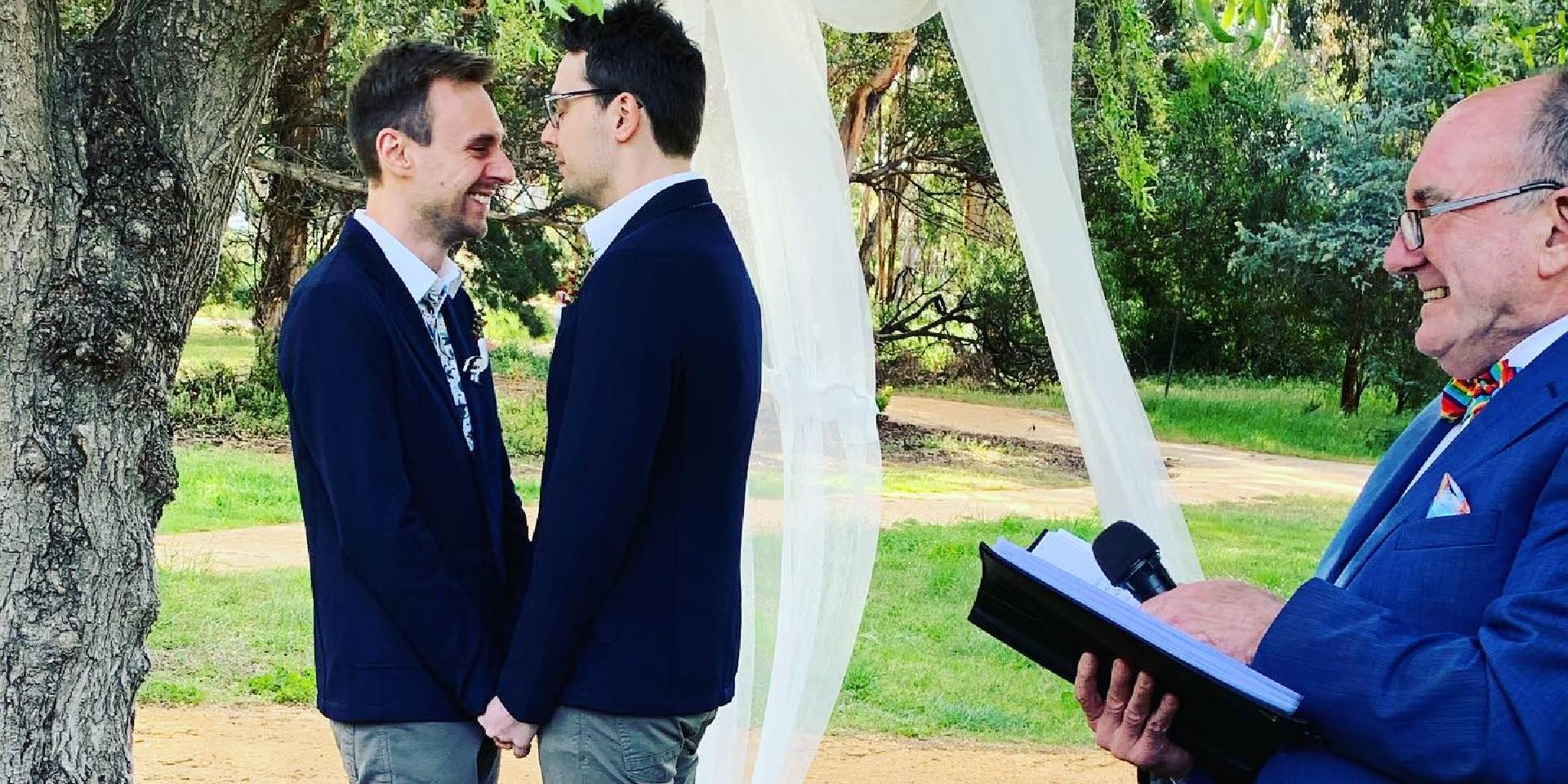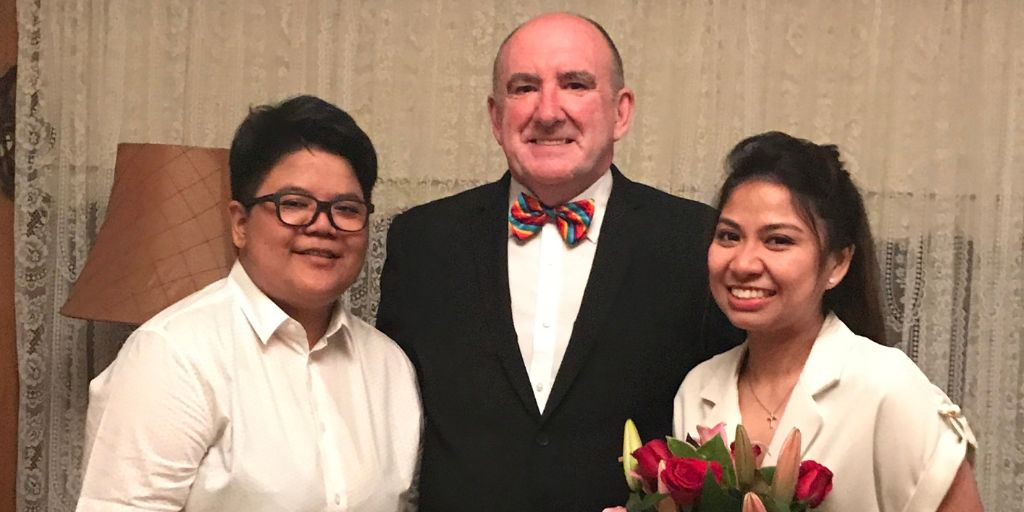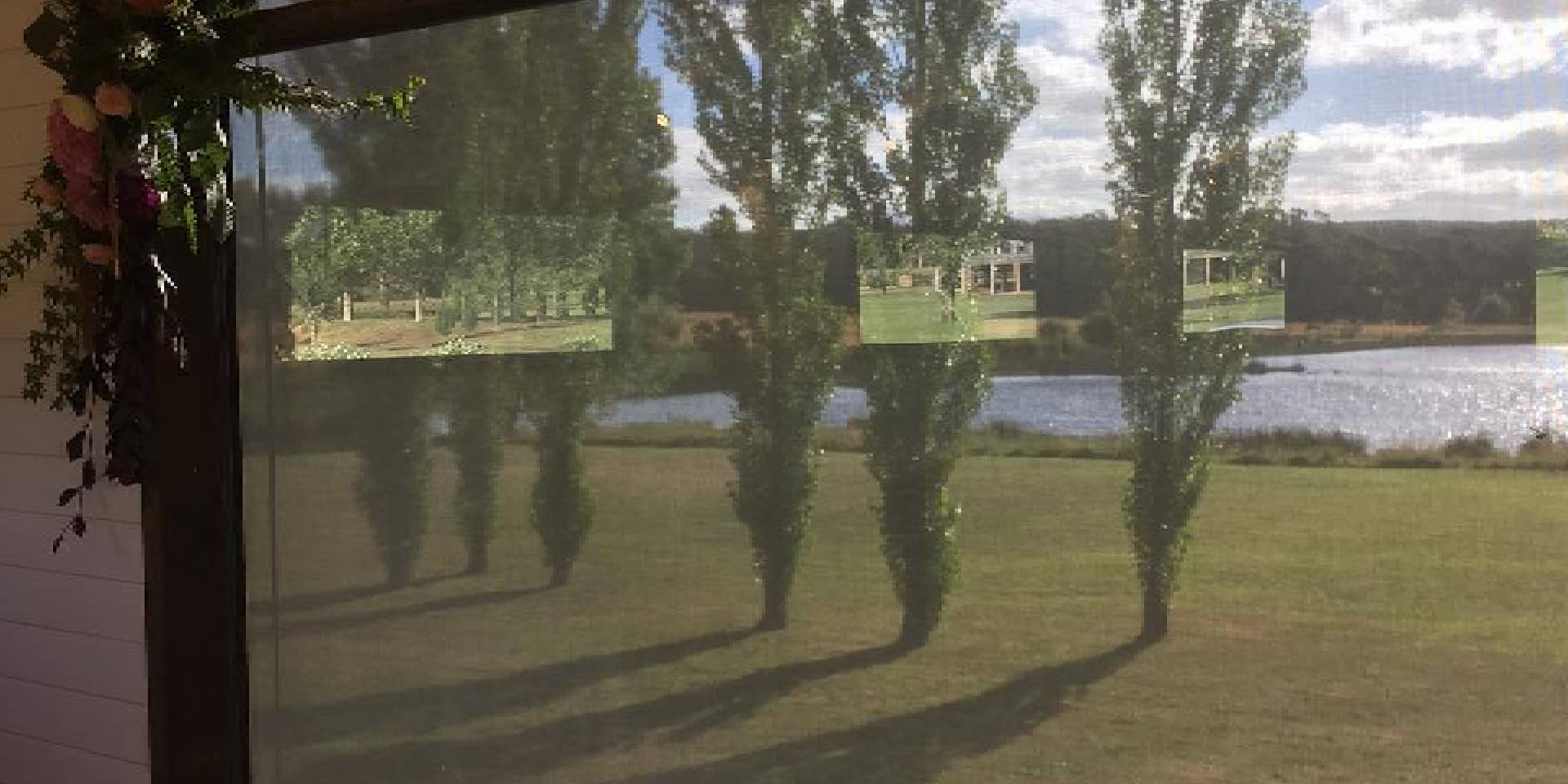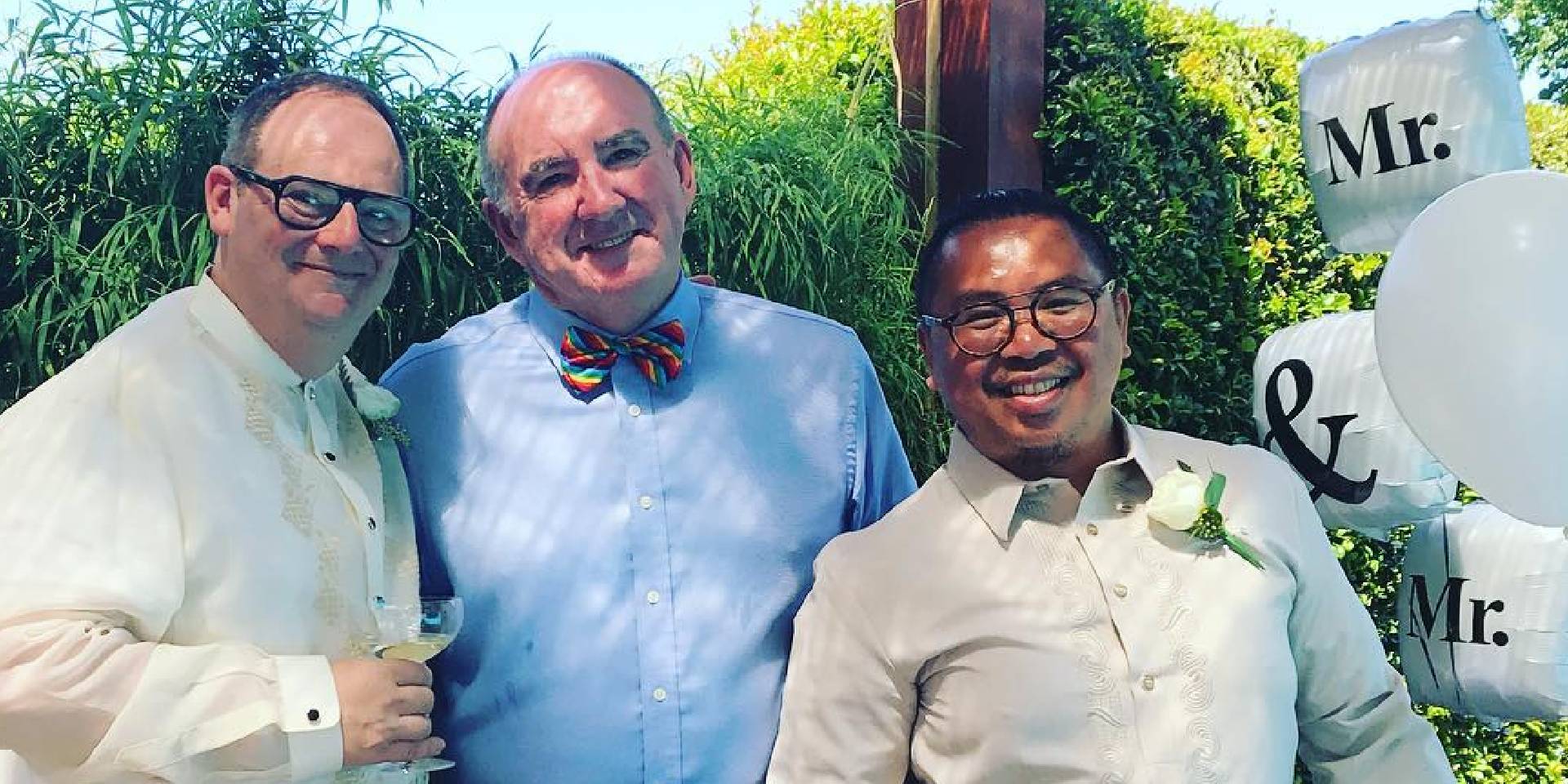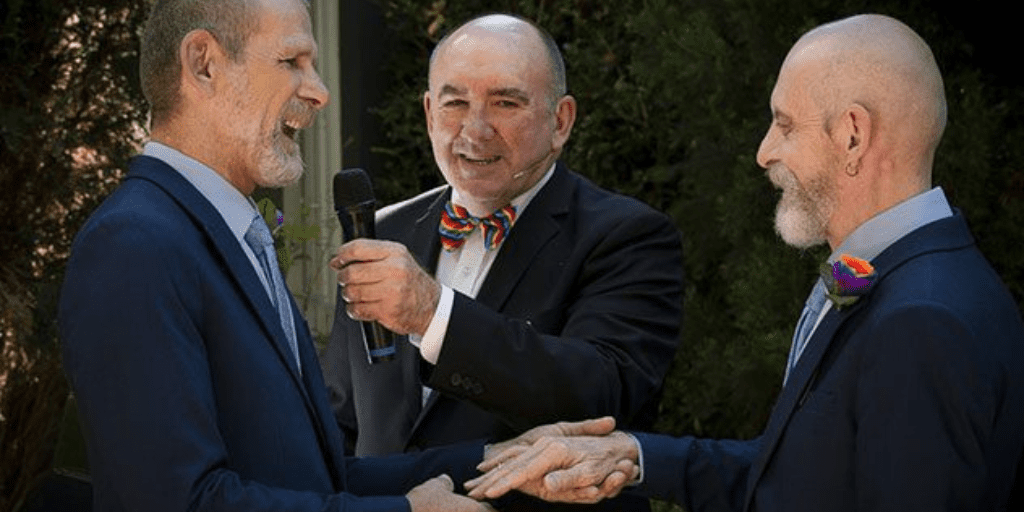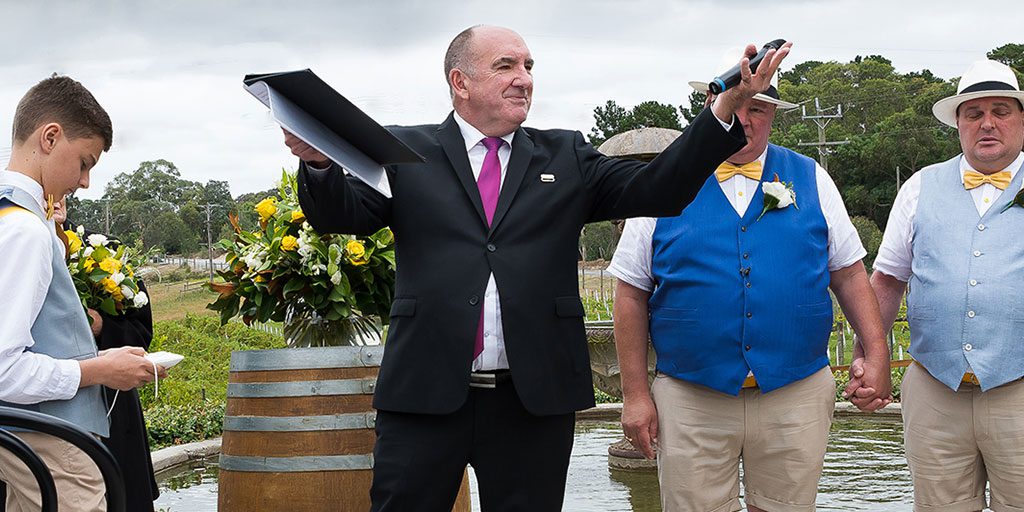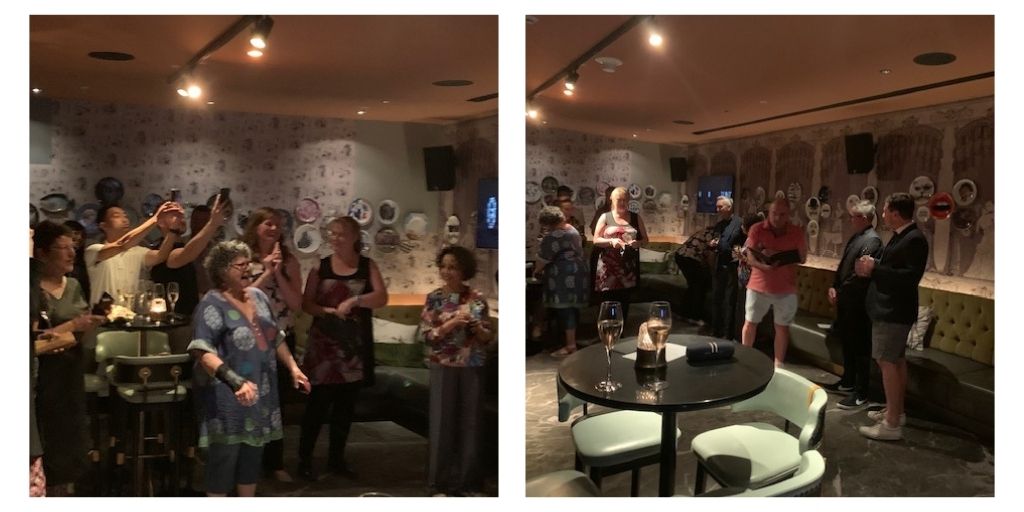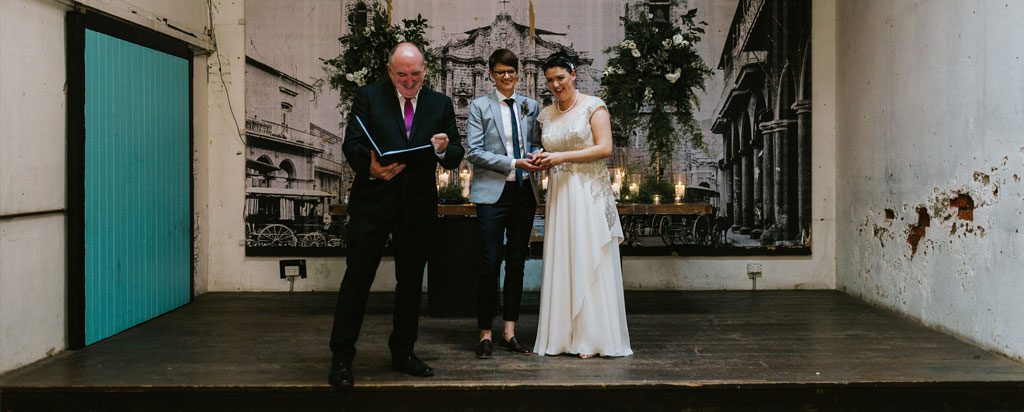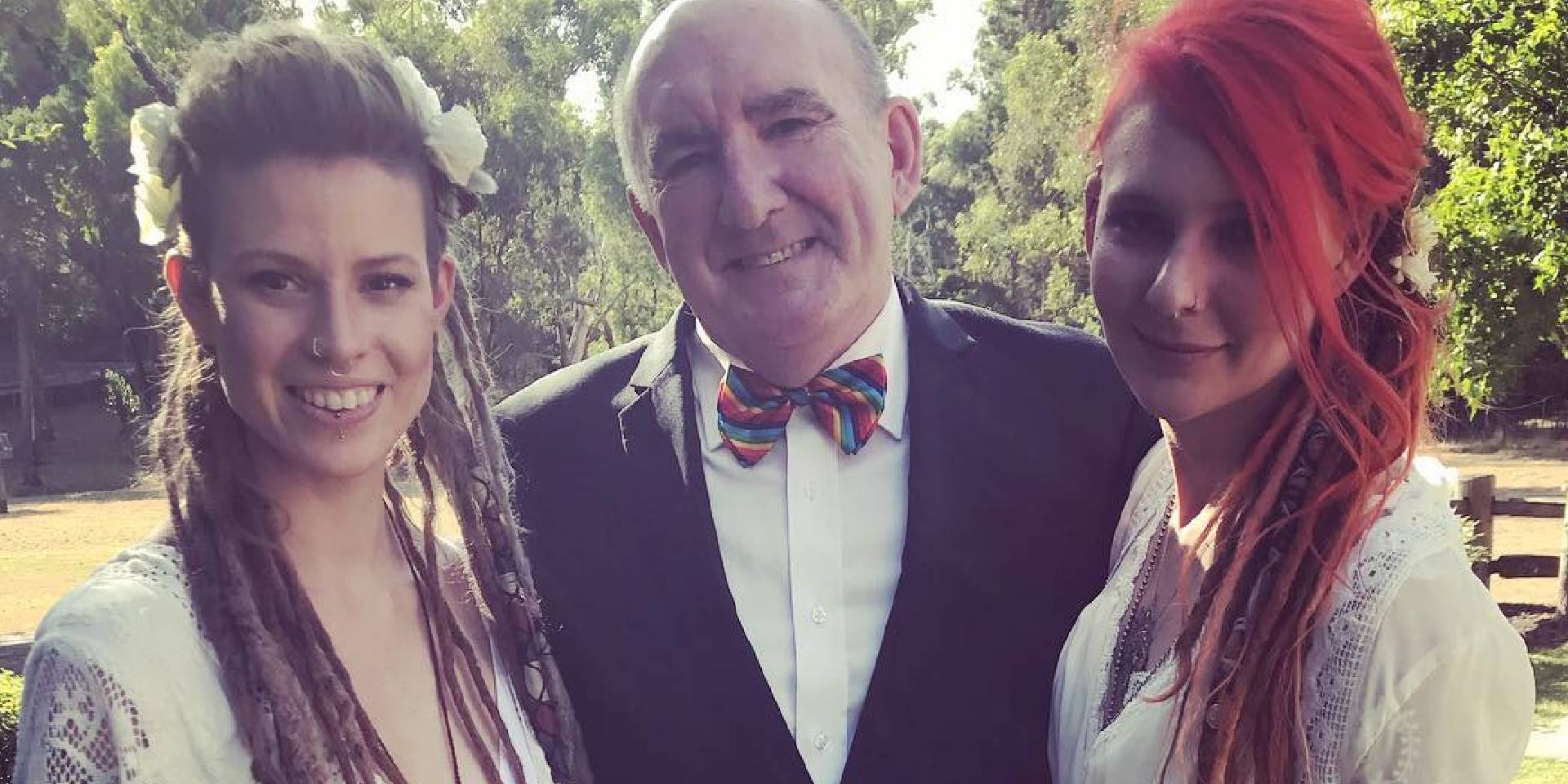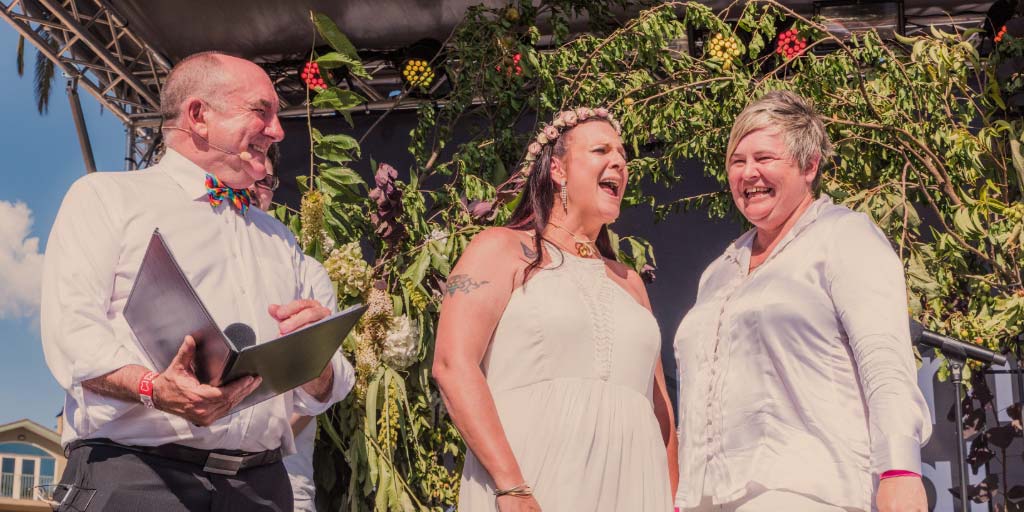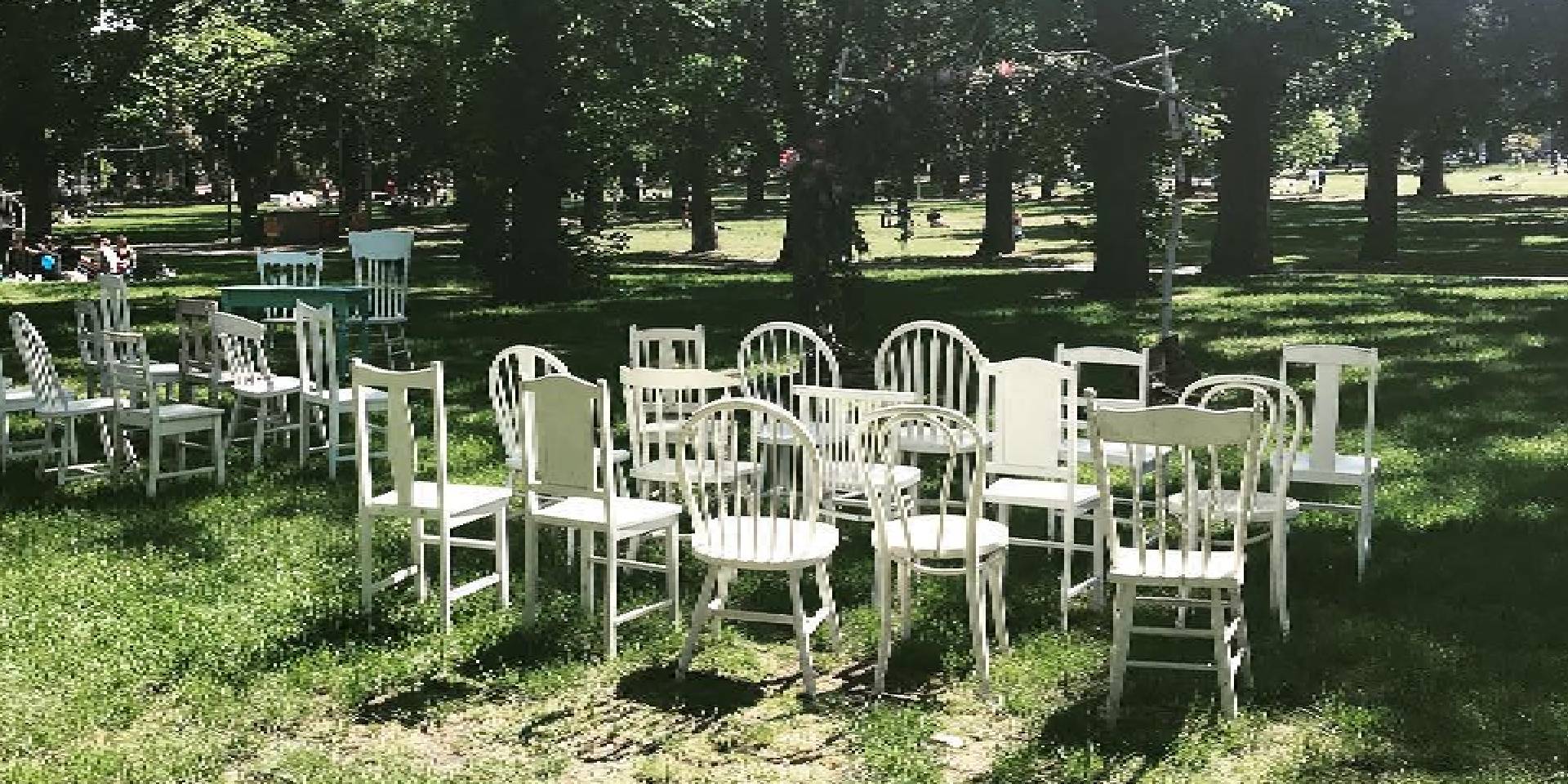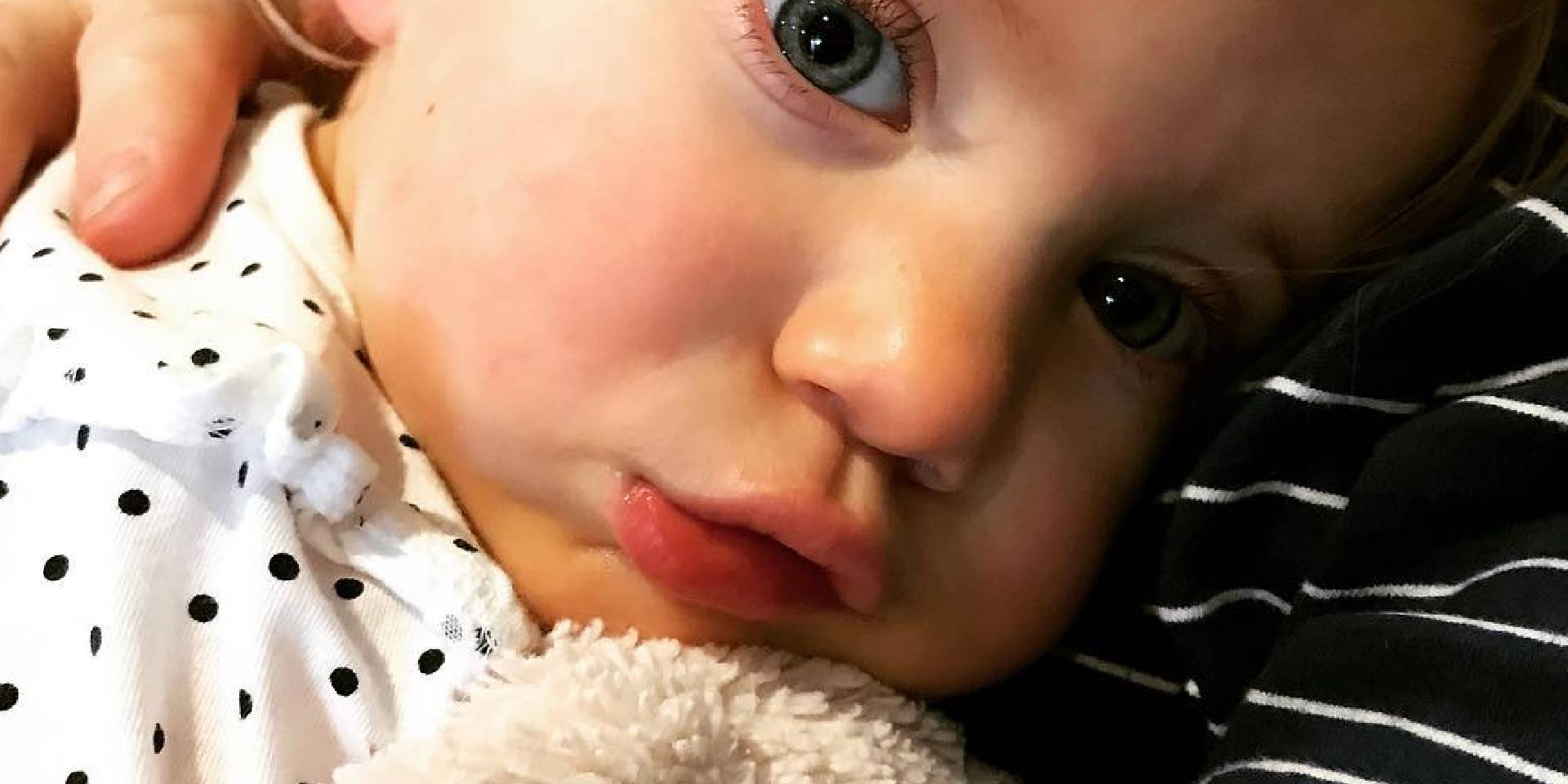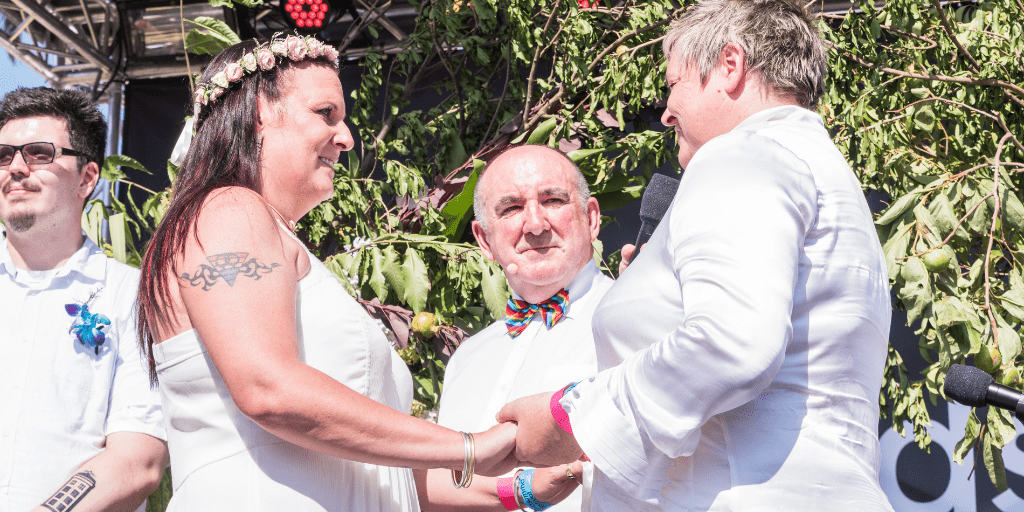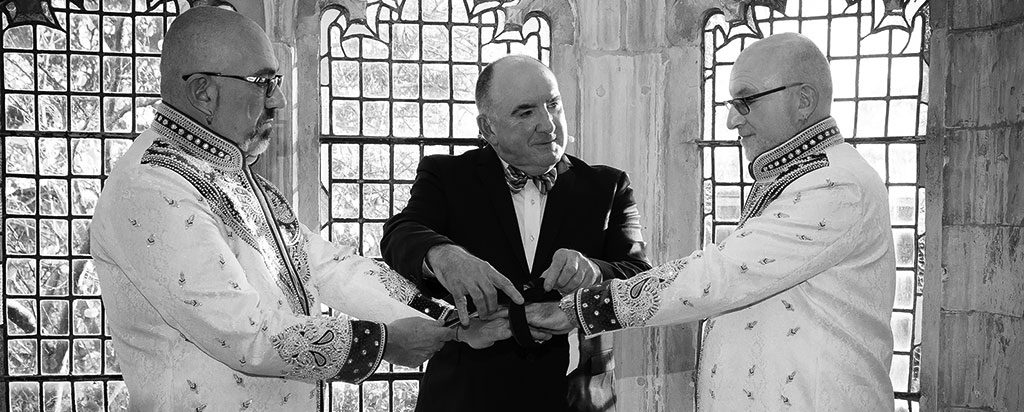
Twelve trends in LGBTIQA+ weddings in Melbourne
As a gay marriage celebrant located in Melbourne, Australia, I’ve now conducted more than 200 LGBTIQA+ marriages, arguably more than any other celebrant in Australia.
In the time since marriage equality became law on 9 December 2017, there have been some trends showing up in the queer couples I’ve married, compared with my straight couples. Here are twelve of those trends.
LGBTIQA+ couples who got married were slightly older than their straight counterparts (Figure 1)
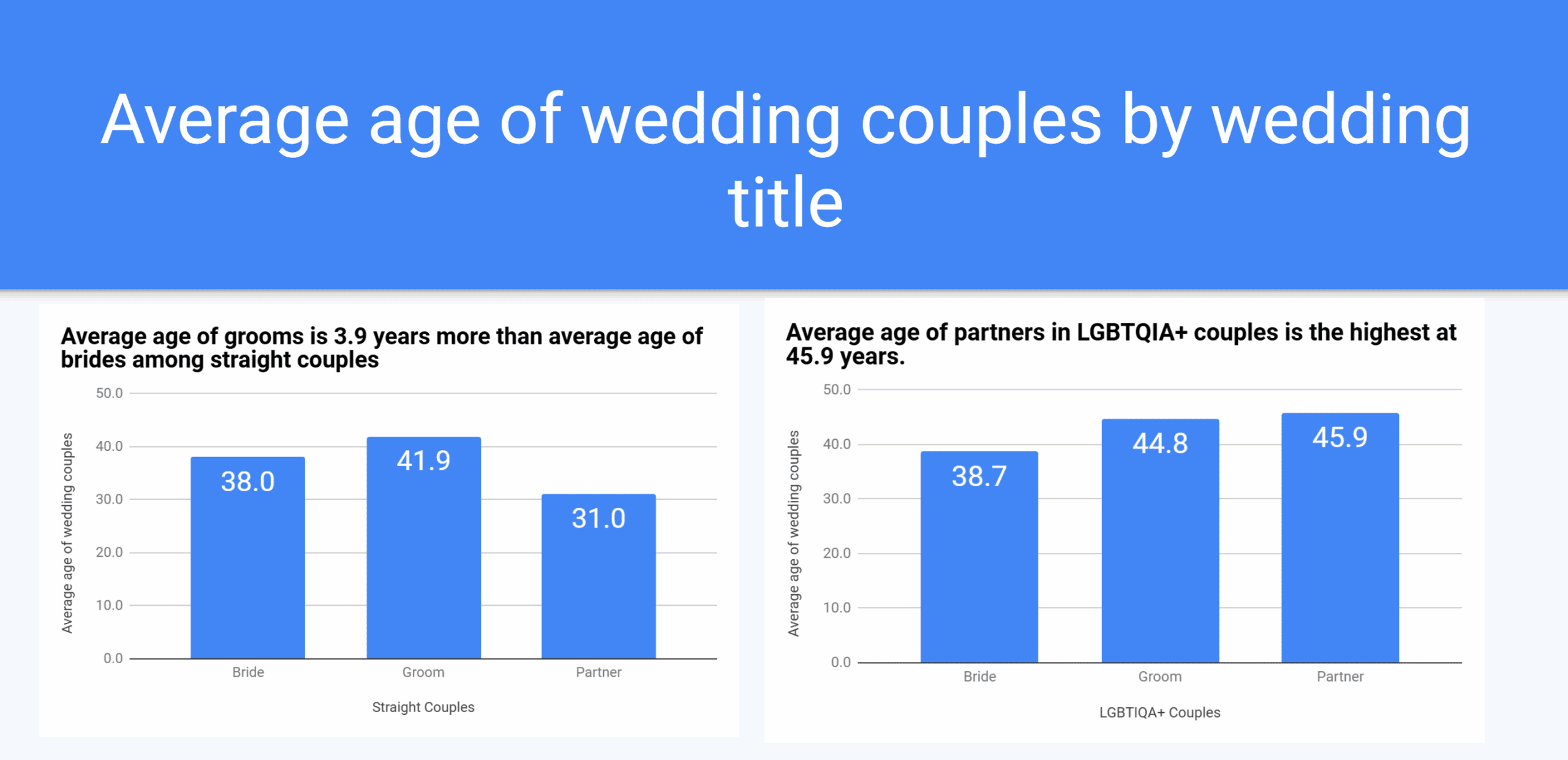
The average age of ‘brides’ who got married to an LGBTIQA partner was 38.7 years compared with 38.0 years for ‘brides’ in straight marriages; the average age of ‘grooms’ who got married to an LGBTIQA+ partner was 44.8 years compared with 41.9 years for ‘grooms’ in straight marriages.
In straight marriages, grooms were, on average, 3.9 years older than their brides. In LGBTIQA+ marriages, grooms were, on average, 6.1 years older than their brides. In LGBTIQA+ marriages, the average age of those who used the marriage term ‘partners’ was, on average 41.9 years.
In general, the LGBTIQA+ couples who got married were older than their straight counterparts. That’s hardly surprising. LGBTIQA+ couples have had to wait until 9 December 2017 to be given the legal right to get married. The year 2018 was the first calendar year in which LGBTIQA+ couples could get married in Australia. And in that first tranche of marriages, there were lots of older couples who’d been waiting and waiting for years and decades to get married, having been living together for many years. That trend has remained the same over time.
Interested to contribute to my blog?
The age gap between parties in LGBTIQA+ couples is higher and more evenly distributed than between parties in straight couples (Figure 2)
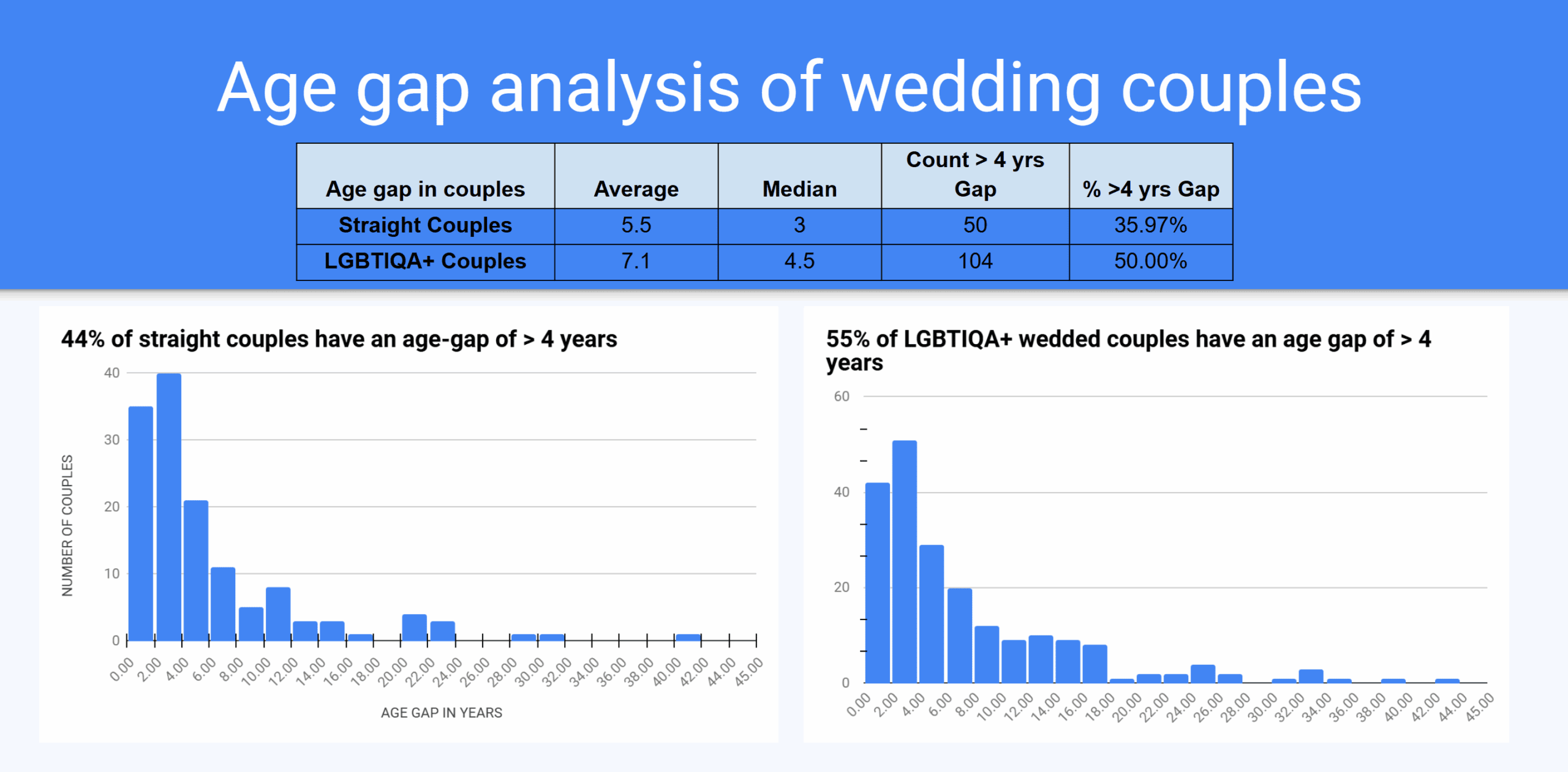
Observation: The age gap amongst LGBTIQA+ couples is higher and more evenly distributed, compared with straight couples.
There is a larger age gap between LGBTIQA+ parties than straight parties (an average of 7.1 years compared with 5.5 years). 50% of LGBTIQA+ couples have an age gap of more than 4 years, compared with just over one-third of straight couples. This is difficult to explain in scientific terms, as there’s been little research devoted to it. But there’s a phenomenon in gay culture of some couples being attracted despite a significant age gap.
And, although there are some heteronormative-based stereotypes (‘sugar daddy’ or ‘gold digger’) that have been applied to the gay community to try to explain it, members of such relationships maintain that it’s genuine physical, emotional and sexual attraction rather than financial motive etc.
Of course, the main factor that explains this age difference is of the size of the ‘gene pool’. As humans, we search for a soul mate, someone with shared values, interests and perspectives in life. Notwithstanding the fact that some of us may have an inherent interest in finding someone older or younger than us, the fact is that, by the time members of the LGBTIQA+ community feel confident and safe enough to search for such a soul mate, many in their age group have been taken.
It’s much easier to find a soul mate who is around the same age, if you’re straight. And so, without compromising on other qualities such as those outlined above, LGBTIQA+ people being to search wider and wider, age-wise, until they find ‘the one’.
The distribution of the ages of LGBTIQA+ couples is markedly wider (Figure 3)
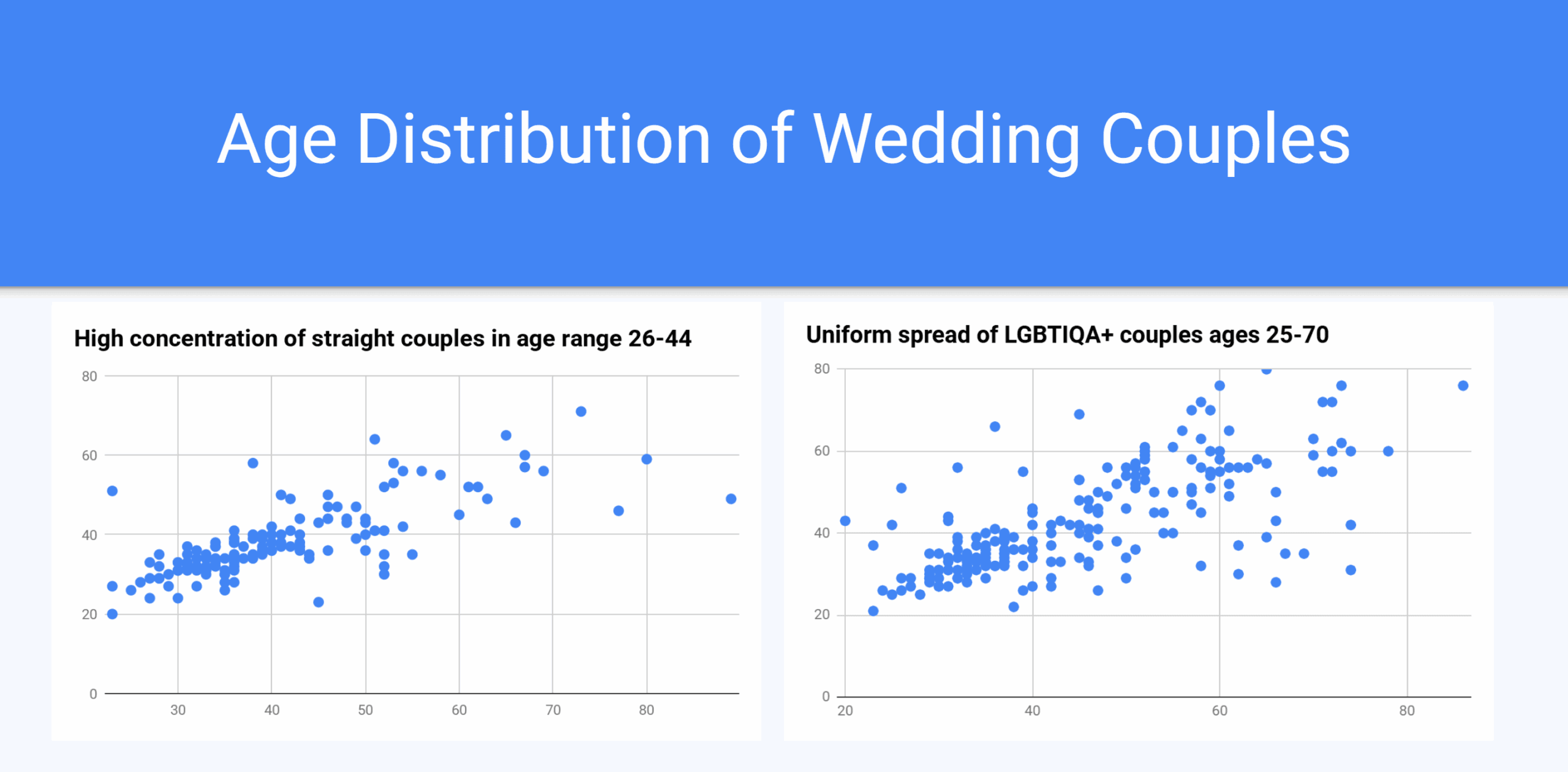
Observation: LGBTIQA+ couples are more evenly spread across the different age groups, compared with straight couples.
The distribution of the ages of LGBTIQA+ couples is markedly more diverse (spread quite evenly across a range of ages from 20 to 70+) than the ages of straight couples whose ages are more clustered in their early-30s and mid-40s. There are small proportions of LGBTIQA+ couples in their 20s and in their 60s and above who got married – with the majority peaking in late 20s and early 30s for women, and roughly the same proportion getting married in their late 30s through to their late 50s.
This could reflect the fact that, still, in our society there are persistent pressures for straight people to get married by the time they are 30. That way, they can begin to form a family whilst still peaking in their careers and afford to bring children up in a manner that gives them a good start to life.
LGBTIQA+ couples, on the other hand, don’t seem to be subject to the same sorts of stereotypical pressures – i.e. of getting married, establishing a home, forming a family, building a career etc. It must be said, though, that whilst this comment applies to those LGBTIQA+ people who are out and proud, there are often other, large pressures on LGBTIQA+ people in their 20s and 30s who are not out and who may still live with their parents, or alone, and not have a steady partner or may not have a predisposition to having children and forming a family.
87% of my LGBTIQA+ clients had never been married before (Figure 4)
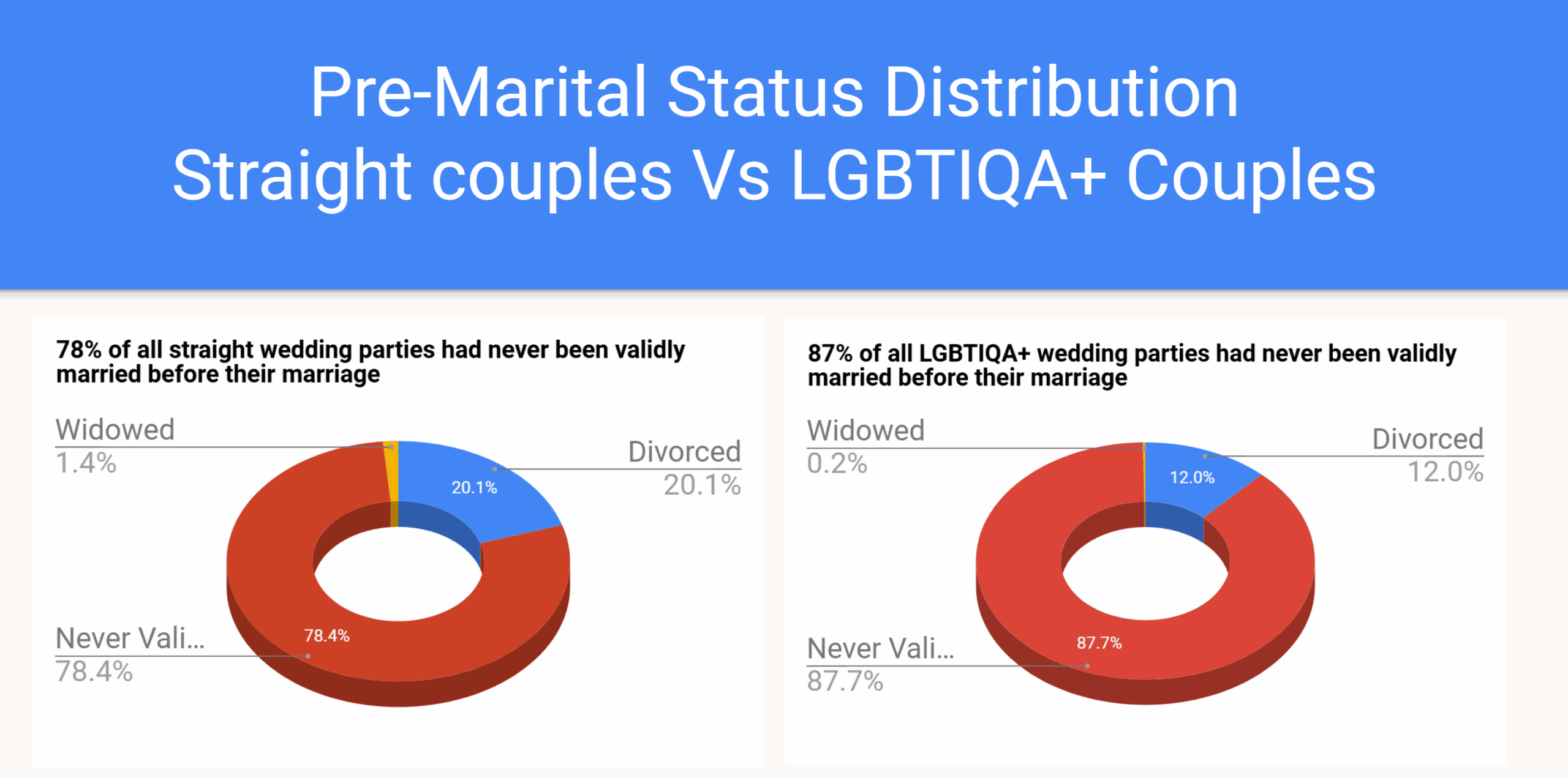
Unsurprisingly, 87.7% of my LGBTIQA+ clients had never been married – mainly because, until 2017, they were prohibited by law from being married to someone other than a ‘person of the opposite sex’. But it also means that they resisted the overwhelming societal expectation that they’d ‘meet the right boy or girl’ and get married.
But 12% (1 in 8) had been married – to people of the ‘opposite sex’. Lots of these people grew up in times when it was expected that, as part of growing up and reaching various milestones and rites of passage, you’d meet the ‘right one’, marry them, settle down in a three-bedroom house with a white picket fence and begin to form a family. Just like the rest of society. And so about 1 in 8 of my LGBTIQA+ clients did just that. And, when they eventually came out, they got divorced – or perhaps that happened in the reverse order! Interestingly, a very small proportion of my LGBTIQA+ clients had been widowed. Often, in these circumstances, they waited for the death of their former spouse before they came out. Eventually, they met their LGBTIQA+ soul mate and got married.
By comparison, approximately 1 in 5 straight clients of mine had previously been married and divorced, compared with 1 in 8 of my LGBTIQA+ clients. Divorced straight clients were more evenly distributed in terms of their age than their straight peers who had never been married – there was a cluster between late 20s to 40s for people who had never been married.
Whilst the numbers of LGBTIQA+ clients who had been divorced were fewer than for straight couples, the age range for divorced LGBTIQA+ clients was between the early 40s to mid 60s. Those LGBTIQA+ clients who had never been married were younger, mainly distributed between the ages of mid 20s and 60 years.
Male Vs Female Wedding Celebrant. Who is better?
LGBTIQA+ couples are just as likely as straight couples to have lived together before marriage (Figure 5)
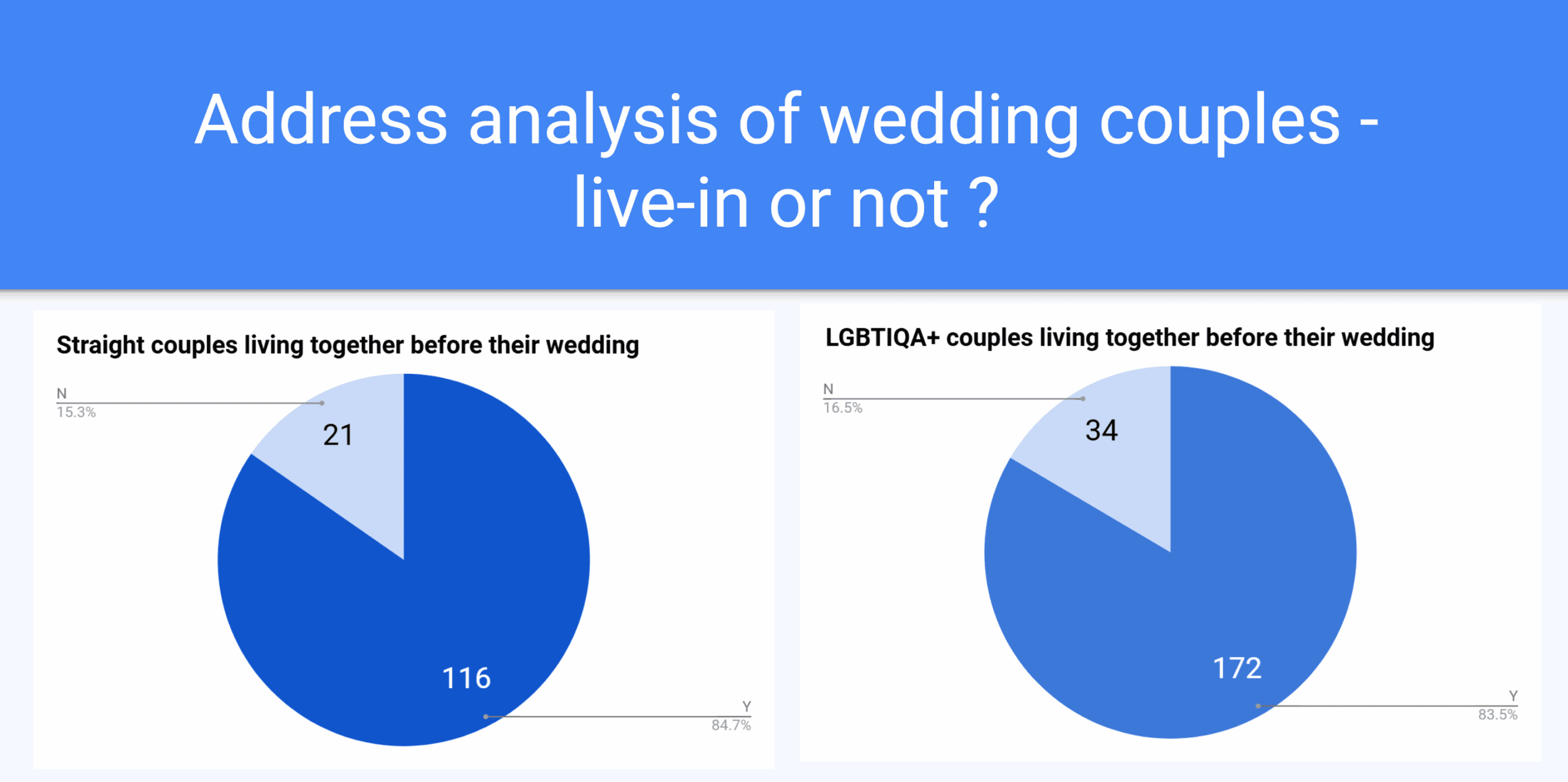
LGBTIQA+ couples are just as likely as straight couples to have lived together before marriage – 84%.
For many Australian LGBTIQA+ couples, this has been the case for years or decades. In times when the outside world was hostile, when harassment in public was rife, when they were denied promotion opportunities at work, when they couldn’t be out and proud while playing sport or at work or at their place of worship, LGBTIQA+ couples’ homes became their safe haven. These couples lived together as ‘friends’ or ‘room mates’.
In some ways, it’s significant that this percentage is so high, given that many of my LGBTIQA+ couples come from countries outside Australia where it is a criminal offence to be LGBTIQA+. Some will live together as ‘friends’ or ‘room mates’ – knowing themselves that they are committed to each other but to the outside world they are just two people living together.
And so, when they fell in love with their LGBTIQA+ partner, despite being denied the legal right to marry that every other section of society had, LGBTIQA+ couples closed in. They bunkered down and made their home their castle. That castle became their safe space. That occurred in years gone by in Australia – and it continues to occur today in countries where there is no marriage equality.
LGBTIQA+ couples like their weddings in the hotter months (Figure 6)
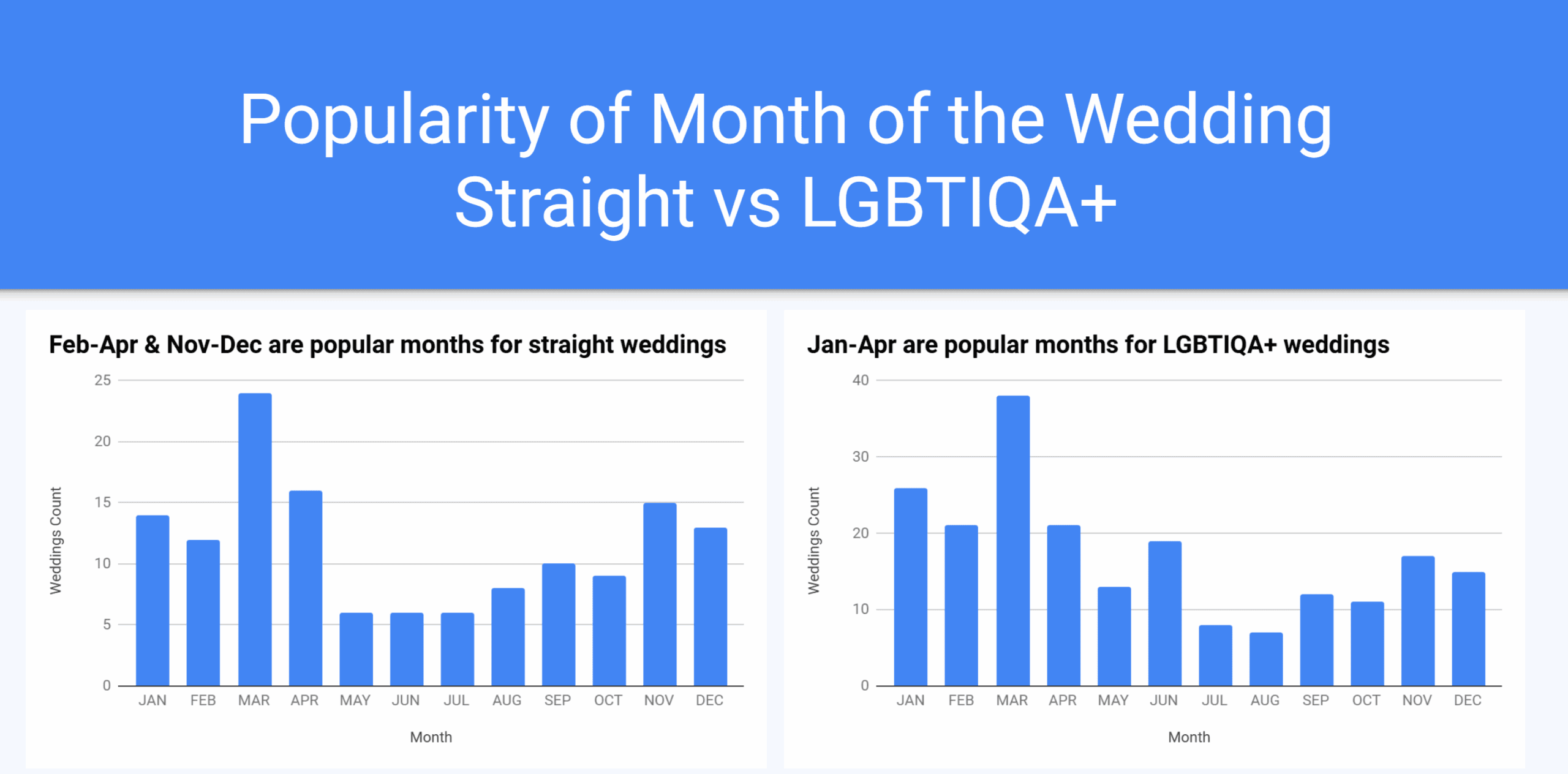
Observation: LGBTIQA+ couples are slightly more likely to plan their wedding early in the year compared with straight couples. March is the favourite month for both LGBTIQA+ and straight weddings.
With regard to my couples, more LGBTIQA+ couples hold their wedding in the earlier, hotter months of the year (January to April) than straight couples – and are also more prepared to have their wedding in the cooler months of May and June. LGBTIQA+ couples seem far less hung up on the perfect photos that many straight couples seem to yearn for. And so, their weddings are not so weather-dependent – the month or amount of light or time of day or shadows don’t feature as much in their wedding planning.
Most LGBTIQA+ couples opt for a Short and Sweet (legals-only) ceremony package – the opposite of straight couples (Figure 7)
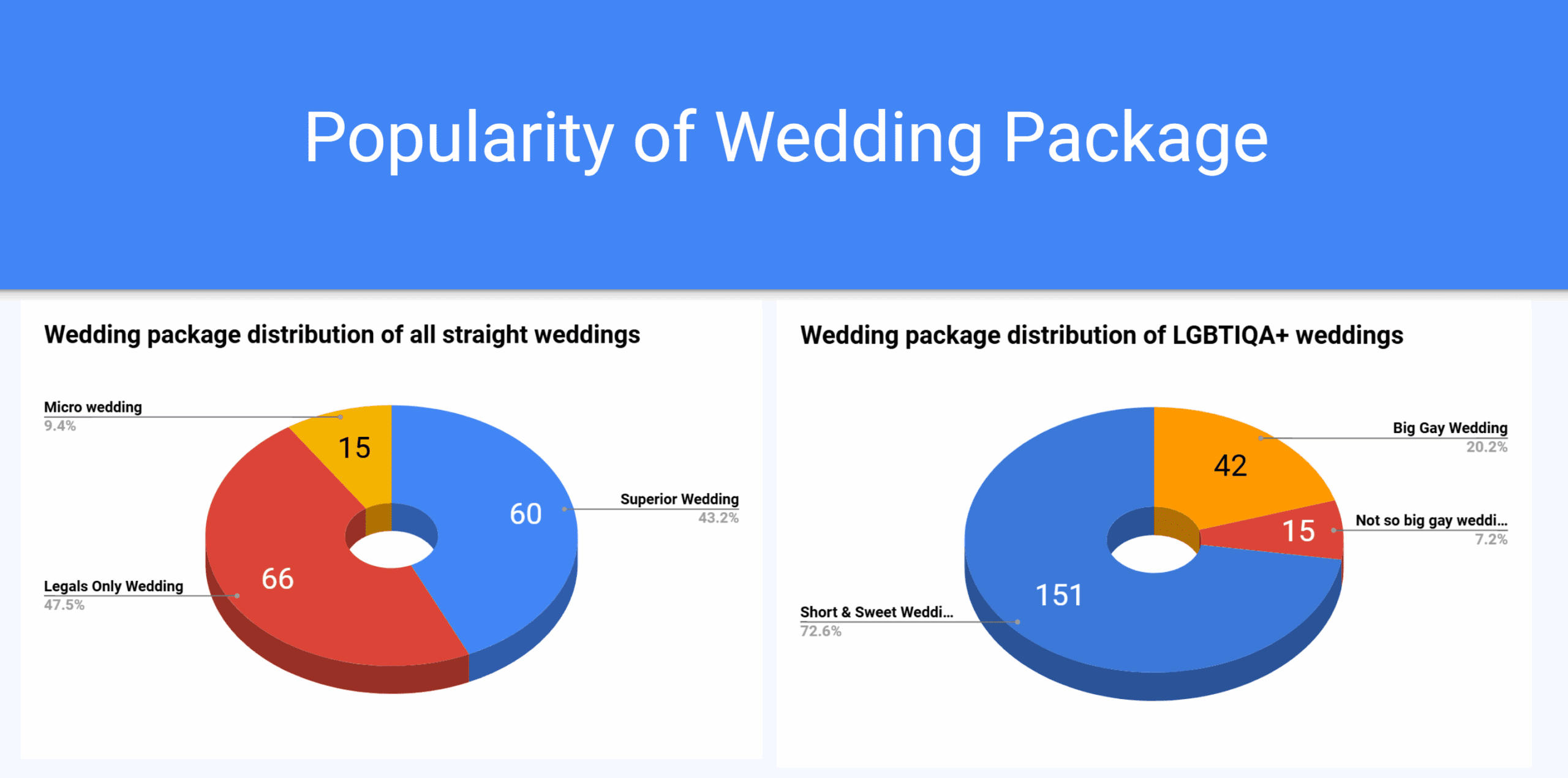
Almost half of my straight couples opt for my Superior Wedding Experience ceremony, the ‘bells and whistles’ option. For them, it’s important to have the traditional parts of a ceremony included. That’s understandable – it’s what many people have been ’educated’ about, in an informal sense, regarding what constitutes a marriage ceremony. This particular package offers just that.
At the same time, more than half of my straight couples are opting for the legals-only wedding ceremony. Perhaps they’ve been married before and don’t want all the fuss that goes with a large and complex wedding. Or perhaps they want to put the money they’d spend on a wedding into their mortgage or an overseas holiday. Or spend it on their children’s private school education.
On the other hand, lots of Australian LGBTIQA+ couples spent their money on a big commitment ceremony when they were legally prohibited from getting married, and so now all they want is to make their union legal, followed by a small celebration with a handful of close friends.
For those LGBTIQA+ couples from outside Australia, it doesn’t make logistical or financial sense to have a large, complex wedding with many guests. They are looking for a ceremony that contains only the legal aspects of getting married – and will often have a ‘wedding reception’ or celebration with their loved ones when they get back home after getting married here. However, some LGBTIQA+ couples from outside Australia have brought with them perhaps 20 close friends from their home country to help them celebrate on their special day.
That’s why more than 70% of LGBTIQA+ couples opt for a Short and Sweet ceremony, with a handful of close friends in attendance. Often, if the couples are from outside Australia, they’ll travel to Melbourne by themselves, get married in my front garden and I will supply the two legal witnesses. Short and Sweet it is!
LGBTIQA+ couples are coming from foreign countries to get married (Figure 8)
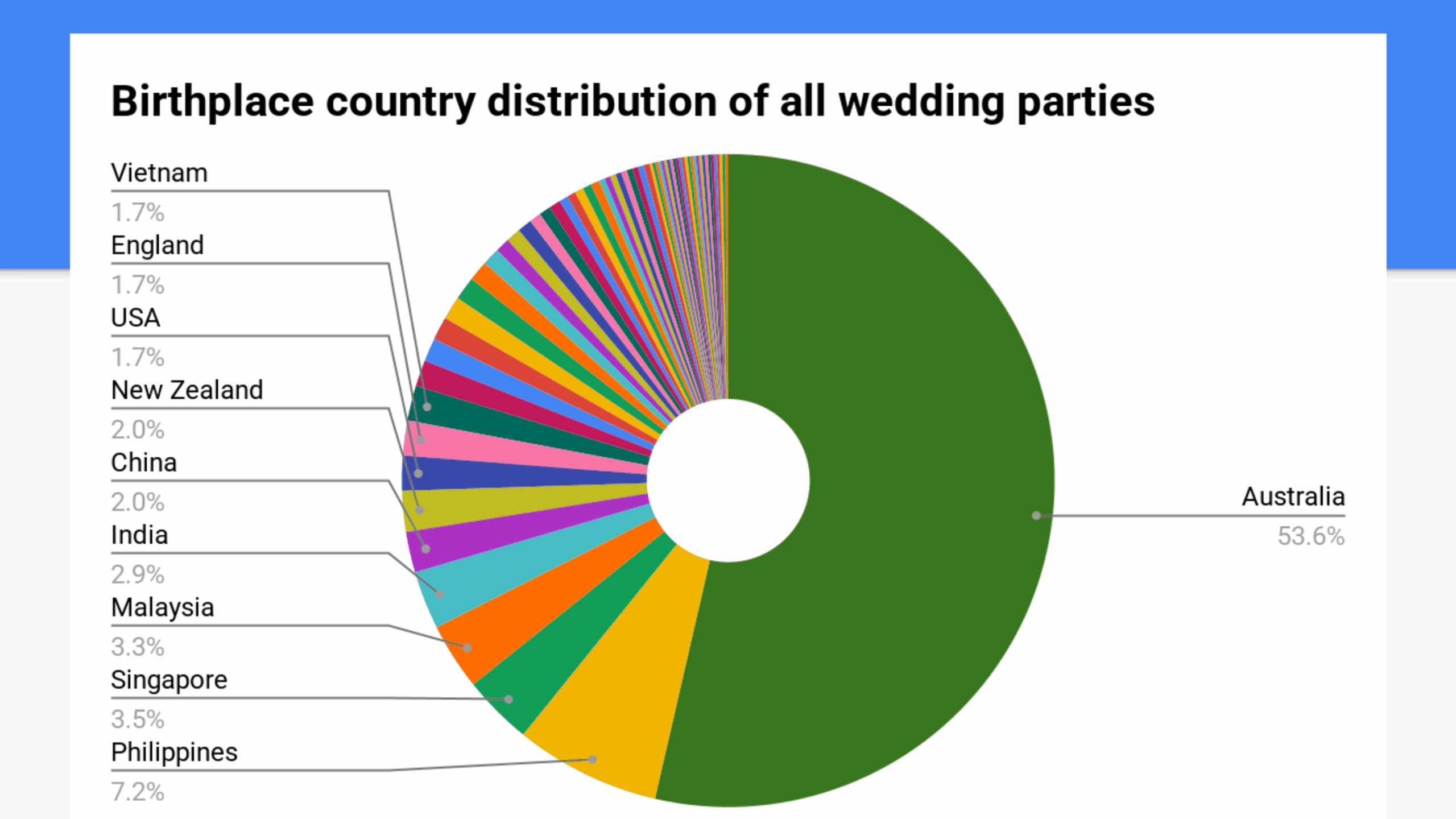
Just over half of my wedding couples – straight and LGBTIQA+ – were born in Australia. But many were born outside Australia.
A higher proportion of LGBTIQA+ couples than straight couples from overseas are increasingly coming to Australia to get married, often combining their trip with a holiday down-under. Whilst the vast majority of my straight couples were from within Australia, and the majority of LGBTIQA+ couples I married also came from Australia, many couples came from foreign countries to get married by me. Many of these couples are deeply closeted. You can read about why they choose to get married, here.
There is greater diversity in the country of birth for LGBTIQA+ couples than for straight couples (Figure 9)
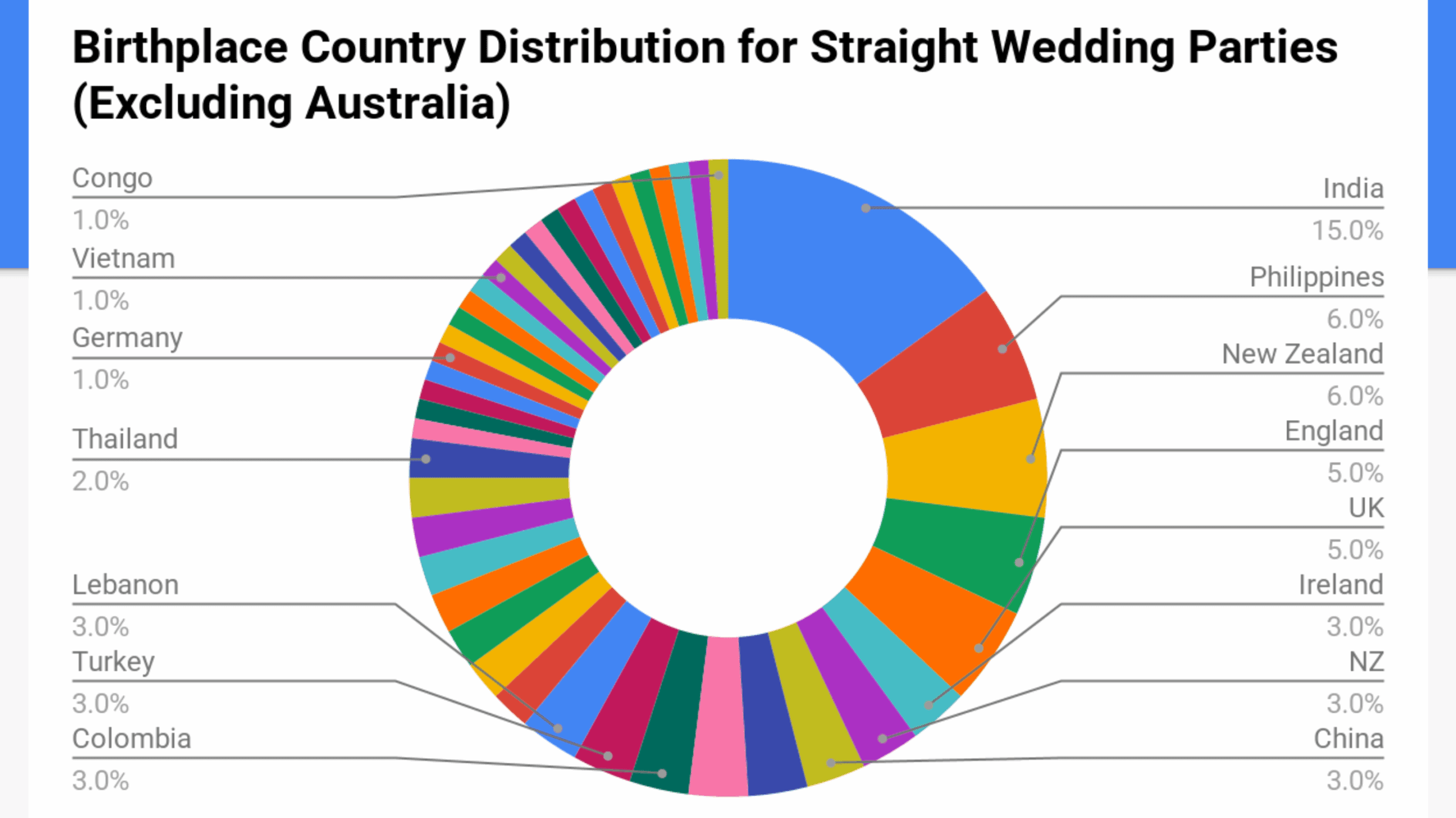
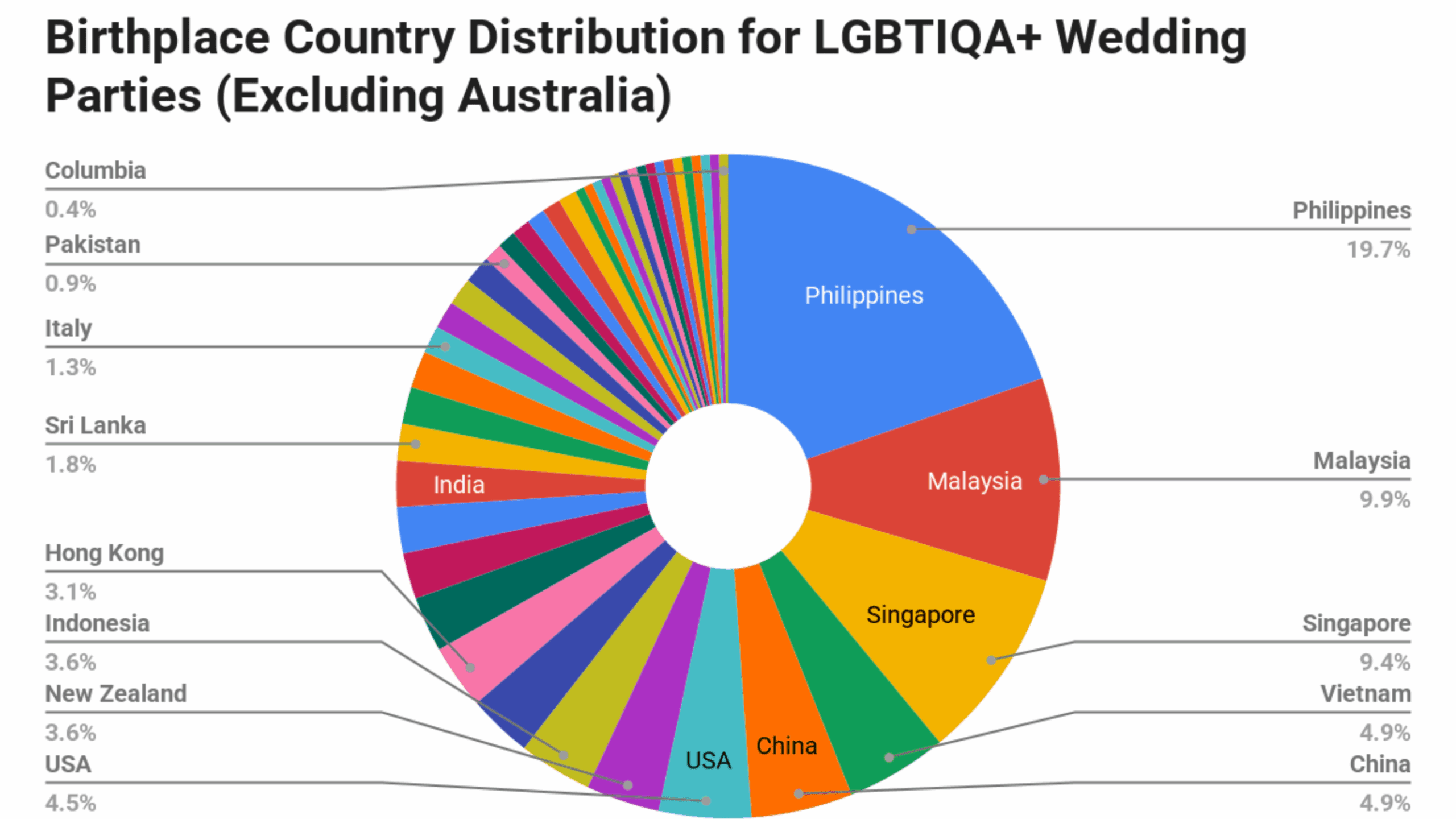
By far the majority of my straight couples were born in Australia, with some coming from India, the UK and New Zealand. Often these couples will have relatives living here and decide to combine a trip down-under or across the pond with an opportunity to get married in front of their relatives. Others migrated here from their country of birth and have been living here.
Many of my LGBTIQA+ couples have come from countries where homosexuality is a criminal offence, and several came from countries where to be homosexual is punishable by death. Even to search for ‘gay celebrant melbourne’ or similar is a risk for them – internet accounts are closely monitored for the use of such key words – and such searches could be life-threatening. That is why I place such importance on ensuring that my LGBTIQA+ couples, no matter where they come from – are safe and that their privacy is maintained at all costs.
But the fact that these couples are determined to marry the person they love and who happens to be LGBTIQA+ goes to the importance of the institution of marriage in people’s lives and the significance of being able to be married, at least in their minds, when they return to their homeland. It gives them hope, as Harvey Milk said on more than one occasion. Some of these couples will use their Australian marriage certificate to help them migrate to a country where there is marriage equality and where they can live authentic lives, together.
The risks for these couples are discussed in some detail in this e-book: Australia as a destination for your wedding.
Find out how to plan your wedding under $1000
The wedding term most commonly used by LGBTIQA+ couples is ‘partner’ (Figure 10)

Observation: “Partner” is the main wedding title of Bronte’s LGBTIQA+ weddings, while “Bride” & “Groom” are equally used in straight weddings.
The wedding term most commonly used by LGBTIQA+ couples (almost 50%) is ‘partner’, with approximately ¼ choosing to use ‘bride’ and ¼ choosing to use ‘groom’. Some female parties I’ve married have chosen the marriage term ‘groom’ whilst some male parties I’ve married have chosen the marriage term ‘bride’.
This is very different from straight couples – almost all of whom used ‘bride’ and ‘groom’ exclusively. Very few straight couples I’ve married have chosen to use the marriage term ‘partner’.
Many LGBTIQA+ couples view the marriage terms ‘bride’ and ‘groom’ as heteronormative and irrelevant to them. They don’t relate to those terms. And they dislike the terms ‘partner’ and ‘spouse’. Often, they will ask if they really do have to choose one of the marriage terms – and, of course, they do. Some men will choose ‘bride’ and some women will choose ‘groom’ not only because of how they identify but also as a silent protest against being forced to use these outdated, straight terms.
Now that the Marriage Act 1961 has been amended to define ‘marriage’ as being ‘between two people’, it seems anachronistic to continue to require that parties to a marriage choose one of these marriage terms so deeply rooted in the heteronormative past or the institution of marriage. And yet the Australian Bureau of Statistics and the Australian Attorney General’s Department continues to require them to choose one of these terms to be entered on the Notice of Intended Marriage.
Most LGBTIQA+ couples are drawn to non-traditional wedding venues (Figure 11)
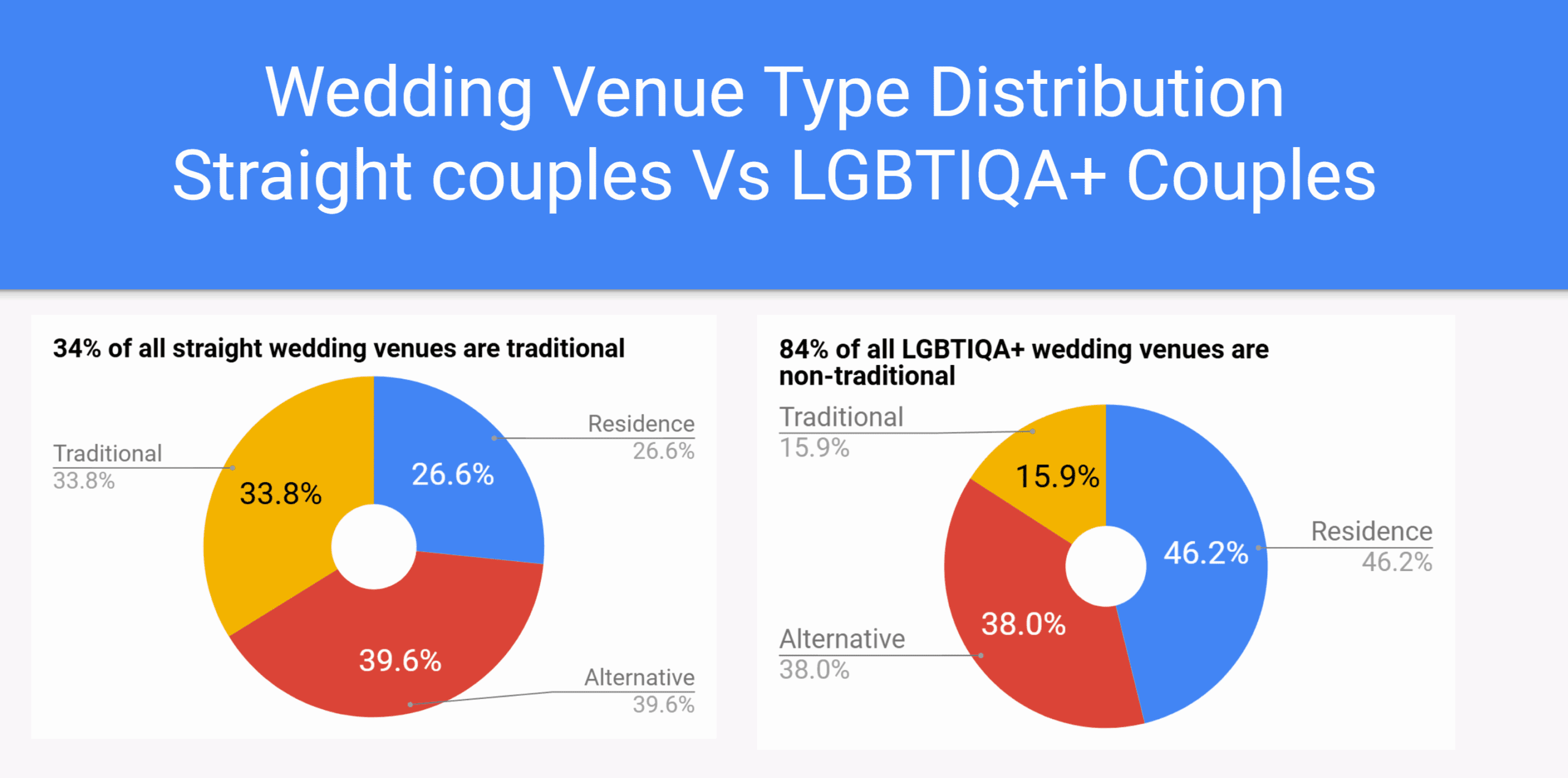
Observation: Straight couples are more strongly tied to traditional wedding venues than LGBTIQA+ couples. LGBTIQA+ couples are more likely to be married at a residence or at alternative venues.
Traditionally, venues dedicated to weddings have driven much of the straight wedding market and wedding industry. Often, they’ll be called a ‘reception house’ or similar. They will typically have a small chapel-style place for the ceremony, a nice garden and nice internal rooms for photographs, and a large function room for the ‘wedding reception’. Many have been around since the 1970s. The function room will typically have round tables with a candle feature or flower feature in the centre, and each person will be assigned a place to sit. Often, as back in the 1970s, the menu will consist of an ‘alternate-drop’ of a chicken or beef-based meal. You get the picture!
Such venues were booked out months and years ahead and, indeed, were usually the first thing to be ticked off on a bride’s checklist when planning the wedding. Traditional wedding venues represented a viable civil marriage alternative location to a church which required a religious marriage ceremony.
Of my straight couples, just over 1/3 got married in a traditional wedding venue, with around 4 in 10 opting for an alternative venue, representing a contemporary shift away from the traditional venues to ones that better reflect them as a couple. A quarter of my straight couples opted to get married at home.
For LGBTIQA+ couples, the statistics are quite different: most are not drawn to traditional wedding venues – only about 1 in 6 of my LGBTIQA+ couples chose to get married there, about half of the proportion of straight couples who did so.
Over 1/3 of all LGBTIQA+ couples opted for alternative venues – art galleries, pubs, bars, restaurants, beaches, parks, public gardens and so on, similar to the proportion of straight couples.
And almost half my LGBTIQA+ couples got married at home – either their own home or that of a friend or my own home. It underlines the importance of LGBTIQA+ couples’ homes as being safe and comfortable, where they can invite a small group of their close friends and have an intimate wedding ceremony followed by some lovely food and beverages, privately.
LGBTIQA+ couples seem to be shunning the traditional wedding followed by a ‘reception’ with the same expensive package offered by the venues that has been offered to straight couples – ie essentially a straight wedding.
Number of couples who asked me to provide their two legal witnesses (Figure 12)
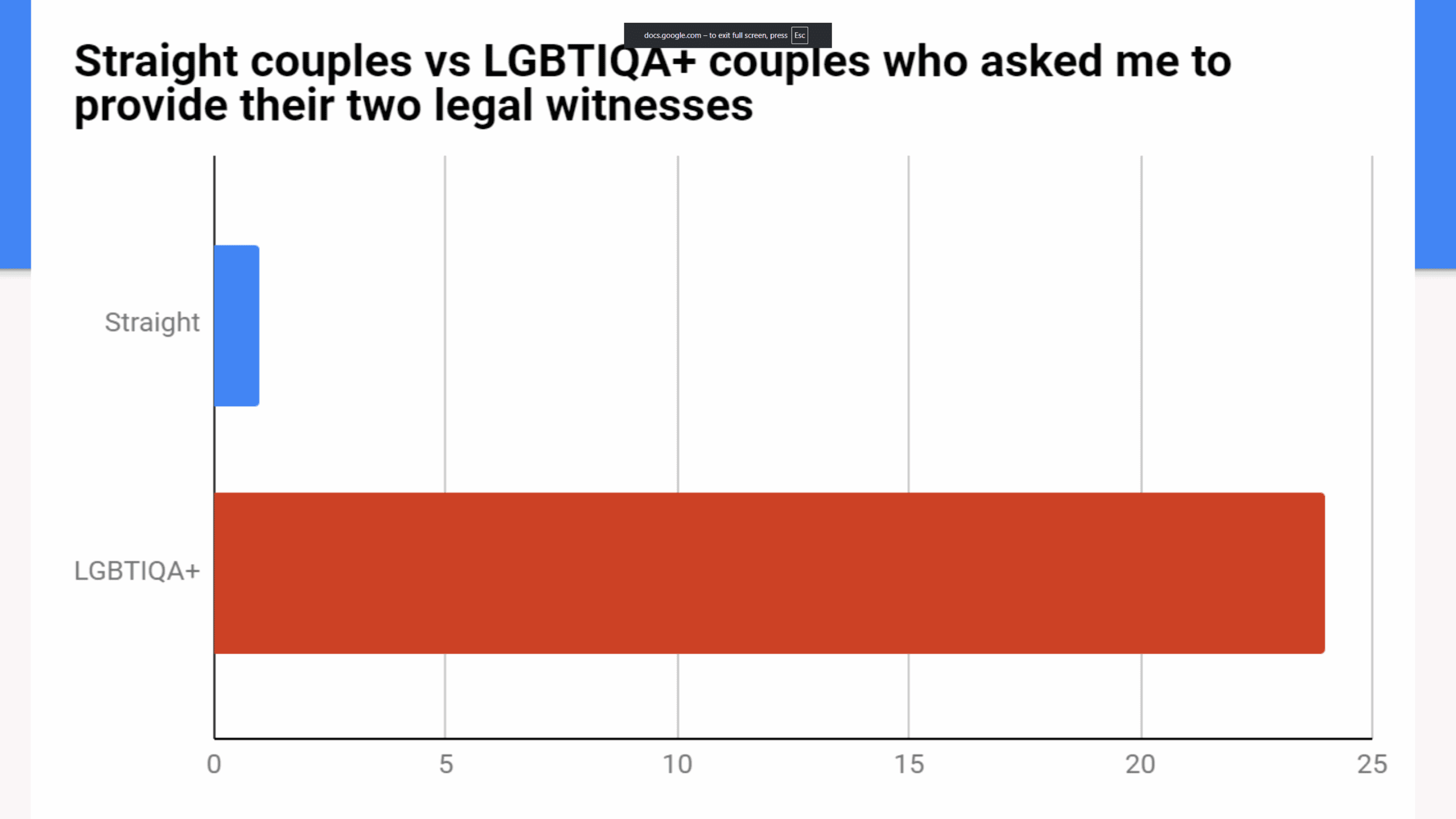
24 LGBTIQA+ couples have asked me to provide their legal witnesses, compared with one straight couple. Lots of my LGBTIQA+ couples come to Melbourne to get married in a Short and Sweet Marriage Ceremony, conducted in my front garden. Often, they travel here on a Visitor Visa as tourists and know no one who can be their legal witnesses. It’s easy for me to provide those witnesses – usually, it’s my husband (a gay man, obviously) and/or one or both of our next-door neighbours who are lesbians. It’s simple, private and safe. The straight couple for whom I provided the witnesses were from regional Victoria and wanted no one they knew to be involved in their legal marriage ceremony.
11 Surprising destinations to avoid for same-sex honeymoons
There are more than 70 countries where same-sex relations are illegal and, in 8 of those, same sex relations are punishable by death. Find out which countries you should avoid for your same-sex honeymoon.
38 Same-Sex Wedding Rituals & Traditions
Know about 38 wedding rituals and traditions that have become part of straight weddings over the centuries and how their alternatives are reinventing the LGBTIQ+ weddings in a authentic way!
4 Much Needed Changes In The Notice of Intended Marriage (NOIM)
There is a need for changes in the NOIM. The challenges that every marriage celebrant and couples face can be avoided if these changes are implemented.
4 Wedding & Engagement Ring Alternative Trends In 2021
Are you getting married but are looking for a ring that’s outside the box? Nowadays people are less bound by traditional ideas of seeking out a ring that fits into the wedding or engagement ring category, but rather a piece that suits their personality. Read more.
7 Things You Must Know Before Attending a Same-Sex Wedding
Find out 13 gift ideas in this blog for a same sex wedding. Gifts range from pet care, wedding photography, a painting perhaps or just cook for the couple.
8 Statistical Facts About Same Sex-Marriage & Couples in Australia
Australia is the 25th country in the world where marriage equality and same-sex marriage became a legal right. Same-sex marriage became law in Australia on 9 December 2017.
All you need to know about IDAHOBIT
Each year, on 17 May, the LGBTIQ+ community around the world celebrates the International Day Against Homophobia Biphobia Interphobia and Transphobia – IDAHOBIT. Learn all you need to know about this day.
All you need to know about Marriage Equality in Australia
Find out what has changed since 9 Dec 2017 when the Australian Federal Government passed the Marriage Amendment Act 2017 and the journey so far.
Community Support Services in Melbourne
This blog has a list of LGBT community support services that are being offered by committed institutions and bodies in Melbourne. There is much that can be done, and together we can help each other lead a better life.
Eight Months Prior To Your Wedding Day
Eight months to wedding day. There is a little less to do than others. This is one of those months. Setting up dates and budgeting for the wedding is on the list.
Eleven Months Prior To Your Wedding Day
Eleven months to wedding day its important that you start working on your celebrant, photographer, videographer, other AV providers, and music.
Emerging Gay-friendly Wedding Venues in Melbourne
Many couples in Covid-safe times have changed their thinking about what they want for a wedding. Here are some of the popular places LGBTIQ+ couples are choosing to use as their gay-friendly wedding venue in Melbourne.
Five Months Prior To Your Wedding Day
Five months to wedding day so it is important that you start working with your photographer, the decorator to ensure that everthing is on track.
Follow-up after your Wedding
The Day to wedding day so it is important that you start working with your photographer, the decorator to ensure that everthing is on track.
Four Months Prior To Your Wedding Day
Four months to wedding day so it is important that you start working with your photographer, the decorator to ensure that everthing is on track.
Four weeks Prior To Your Wedding Day
Four weeks to wedding day so it is important that you start working with your photographer, the decorator to ensure that everthing is on track.
Fun Ideas for Your Vow Renewal in Melbourne
If you are a same-sex couple, your ceremony can be similar to any other wedding vow renewal in Melbourne. Creative vow renewal ideas can light up your ceremony. Beachside ceremonies, a garden setting or some important place that connects both of you - a unique idea can make it special.
Gay Wedding Ideas in Australia
Almost every couple I marry is seeking a meaningful ceremony that allows them to tell their story. They want a wedding ceremony that they can identify with and celebrates their love, in a way like no one else they know has done.
Getting married in Australia on a visa – for same-sex couples
Easy Steps to Getting married in Australia on a visa. Can I marry in Australia on visitor visa? Legal requirements to get married in Australia.
How a Celebrant Can Customise Your Wedding Ceremony in Melbourne
By hiring a wedding celebrant in Melbourne, you will have the flexibility to design a custom wedding ceremony that suits your individual preferences and that celebrates your unique family. You can have the ceremony anywhere and anytime you want, that reflects your personal beliefs and lifestyle.
How To Get Married in Australia – For LGBT Couples
In Australia the same law applies to straight couples and LGBT couples. Few aspects are to be remembered like Free Consent, the Marriage Act 1961 etc.
How To Plan Your Commitment Ceremony in Melbourne
Lot of couples desire to plan a commitment ceremony instead of a marriage ceremony. Planning a same-sex commitment ceremony is really very similar to planning any other wedding ceremony in Melbourne. Find out what to Consider when Planning a Commitment Ceremony vs a Marriage Ceremony in Melbourne?
How To Plan Your Same Sex Wedding on a $1000 Budget
Same sex wedding on a budget means lot of things. With a creative approach and some romantic flair of planned events, we bet you can make your wedding a memorable one right here in Melbourne.For starters you can avoid holidays & weekends.
How to Work Respectfully With LGBTI Couples as a Wedding Supplier
As a Wedding Supplier it is vital to avoid any assumptions and know the preferences of your LGBT client. A Wedding Supplies number one rule should be to reassure a LGBTI couple that they will never compromise their status. Being discreet in any communication helps a lot. Find out more in this blog.
Ideas for Your Commitment or Marriage Ceremony in Melbourne
Four fresh marriage ceremony ideas that go beyond the traditional wedding or commitment ceremony with these unique unity ceremonies. You can choose from a Sand ceremony, Love letter ceremony, Planting a tree or Handfasting as an unity action to solidify your commitment in Melbourne. Read for more.
Impact of COVID-19 restrictions on Weddings & Funerals – JOY 94.9 Interview
The journey to become a parent is not always easy for any couple. Increasingly, it is a journey that more and more people – both couples and single people – are choosing to embark on. Read on to know about the surrogacy journey of a gay couple in Australia.
LGBTIQA+ Wedding Guide Download – Australia as a Destination For Your Wedding
Download your Free copy of Same-Sex Wedding Planner specially designed for LGBT weddings in Melbourne, Victoria. Month-by-month to-dos for couples for a unique wedding ceremony.
Migration Legal Services for LGBTIQA+ Individuals Seeking Safety in Australia
Discover how LGBTIQA+ individuals facing persecution in their home countries can seek safety and protection in Australia. Learn about legal options, case studies, and the importance of finding a supportive legal team.
My journey towards 200 LGBTIQA+ weddings
Discover the inspiring journey of Bronte Price, a trailblazing marriage celebrant dedicated to celebrating love in all its forms. From the challenges of pre-marriage equality to performing 200+ LGBTIQA+ weddings, explore his commitment to creating authentic, inclusive ceremonies and empowering couples worldwide.
Nine Months Prior To Your Wedding Day
Nine months to wedding day so it is important that you start working with your photographer, the decorator to ensure that everthing is on track.
On Your Wedding Day – For Your Attendants
The Day to wedding day so it is important that you start working with your photographer, the decorator to ensure that everthing is on track.
One Week Prior To Your Wedding Day
One weeks to wedding day so it is important that you start working with your photographer, the decorator to ensure that everthing is on track.
Quick Facts About Same-sex Prospective Marriage Visa in Australia
The change in Australian marriage law allowing LGBT couples to get married opened up immigration opportunities that didn't previously exist. Now the Prospective Marriage Visa is now open to anyone.
Role of the Civil Marriage Celebrant
What can you expect from a Civil Marriage Celebrant during the planning and the wedding ceremony? How to get all the help you need from the celebrant for your wedding?
Same Sex Couples – Change of Name After Marriage?
Do you need to change your last name after they’ve got married as a same-sex couple? Or can you continue with your present surname? Find out the pros and cons of name change after marriage.
Same-Sex Wedding Checklist
In Australia the same law applies to straight couples and LGBT couples. Few aspects are to be remembered like Free Consent, the Marriage Act 1961 etc.
Seven Months Prior To Your Wedding Day
Seven months to wedding day. There is a little less to do than others. This is one of those months. Setting up dates and budgeting for the wedding is on the list.
Should You Choose a Male or Female Celebrant?
While choosing a marriage celebrant in Melbourne, find out who among a male or femal wedding celebrant can best accommodate for any significant life event. A lot of decision making goes into planning any ceremony, so you should know if the gender of the celebrant can make any difference at all.
Six Months Prior To Your Wedding Day
Six months to wedding day so it is important that you start working with your photographer, the decorator to ensure that everthing is on track.
Special Wedding Dates for LGBTI Couples in 2019
Lots of LGBTI couples want special dates for their special day that they’ve waited far too long for their wedding. If you’re a couple trying to zero down a date, there are endless ways to decide on one.
Surrogacy: when, not if, you will be parents
The journey to become a parent is not always easy for any couple. Increasingly, it is a journey that more and more people – both couples and single people – are choosing to embark on. Read on to know about the surrogacy journey of a gay couple in Australia.
Ten Months Prior To Your Wedding Day
Ten months to wedding day its important that you start working on your wedding preparations like catering, booking venue. guest list, selecting your dates.
The Comprehensive Guide to a Queer Wedding
A queer wedding is about love without compromise. Find inspiration, ideas, & styling tips to create a celebration that’s truly yours.
The Day Before Your Wedding
The Day to wedding day so it is important that you start working with your photographer, the decorator to ensure that everthing is on track.
The Day Of Your Wedding
The Day to wedding day so it is important that you start working with your photographer, the decorator to ensure that everthing is on track.
The Role of the Civil Marriage Celebrant
Find out about the role of a Marriage celebrant in Australia. Celebrants are highly trained and qualified. Marriage Celebrants appointed since 2003 have had to undergo special training before being appointed. Read more on what to expect from a marriage celebrant.
The Ultimate Guide To Wedding Rings For LGBTIQ+ Couples
Are you engaged and are looking for a LGBTIQ+ friendly Wedding Ring that’s outside the box? Find out about Wedding Ring types, popular LGBT trends, where to shop online and more in this detailed guide.
Three Months Prior To Your Wedding Day
Three months to wedding day so it is important that you start working with your photographer, the decorator to ensure that everthing is on track.
Three weeks Prior To Your Wedding Day
Three weeks to wedding day so it is important that you start working with your photographer, the decorator to ensure that everthing is on track.
Tips for marriage celebrants to keep in mind when working with wedding photographers
Nobody is going to be looking at the happy couple, instead just wondering who the heck that face belongs to, in the background when the couple are kissing.
Top 13 Gift Ideas For a Same-Sex Wedding
Find out 13 gift ideas in this blog for a same sex wedding. Gifts range from pet care, wedding photography, a painting perhaps or just cook for the couple.
Top Wedding Dress Shopping Tips For Lesbian Brides
Choosing outfits for lesbian brides is a challenging task. Find some tips here, from experts in wedding fashion, to help you with your wedding dress.
Twelve Months Prior To Your Wedding Day
Just before a year to your wedding day its important that you need to start focusing on the big things like style, size, budget, date and guest list.
Twelve trends in LGBTIQA+ weddings in Melbourne
Almost every couple I marry is seeking a meaningful ceremony that allows them to tell their story. They want a wedding ceremony that they can identify with and celebrates their love, in a way like no one else they know has done.
Two Months Prior To Your Wedding Day
Two months to wedding day so it is important that you start working with your photographer, the decorator to ensure that everthing is on track.
Two weeks Prior To Your Wedding Day
Two weeks to wedding day so it is important that you start working with your photographer, the decorator to ensure that everthing is on track.
Ways to Plan Your Gay Wedding Ceremony in Melbourne
Plan Your Gay Wedding Ceremony in Melbourne so that everything falls in line on your special day. Just as with wedding ceremonies, there are countless ways to make your ceremony meaningful, personal, and reflective of who you are, individually and as a couple.
Welcome Your New Baby With a Naming Day Ceremony in Melbourne
Naming Day Ceremony in Melbourne are done by celebrants like Bronte Price. The important thing is to celebrate your unique family, commemorate the special commitment you are making to your child.
Why Couples Renew Their Wedding Vows: Bronte Price Speaks with Tom Elliott on 3AW
Discover the growing trend of renewing wedding vows. From milestone anniversaries to heartfelt personal promises, learn why couples celebrate their love again with unique, meaningful ceremony.
Why Do Closeted Couples Get Married?
My experience with lots of closeted couples has taught me that they fear that sort of reaction – and it can even drive them further back into the closet and make them close that closet door for even longer.
Why Do Some Choose a Commitment Ceremony Over a Wedding?
Find out the key differences in Commitment Ceremony Vs Wedding Ceremony. There are numerous reasons why both heterosexual and homosexual people choose not to get married. Reasons why some choose the former over the later and more from the Gay celebrant in Melbourne.
Your Guide to Lesbian Weddings in Melbourne
Planning a unique, romantic, and budget-friendly lesbian wedding in Melbourne? Get expert tips, venue ideas, and advice from an experienced gay marriage celebrant with over 200+ LGBTIQA+ weddings under his belt. Discover how to create a meaningful ceremony tailored to your needs.
Error: No feed found.
Please go to the Instagram Feed settings page to create a feed.

